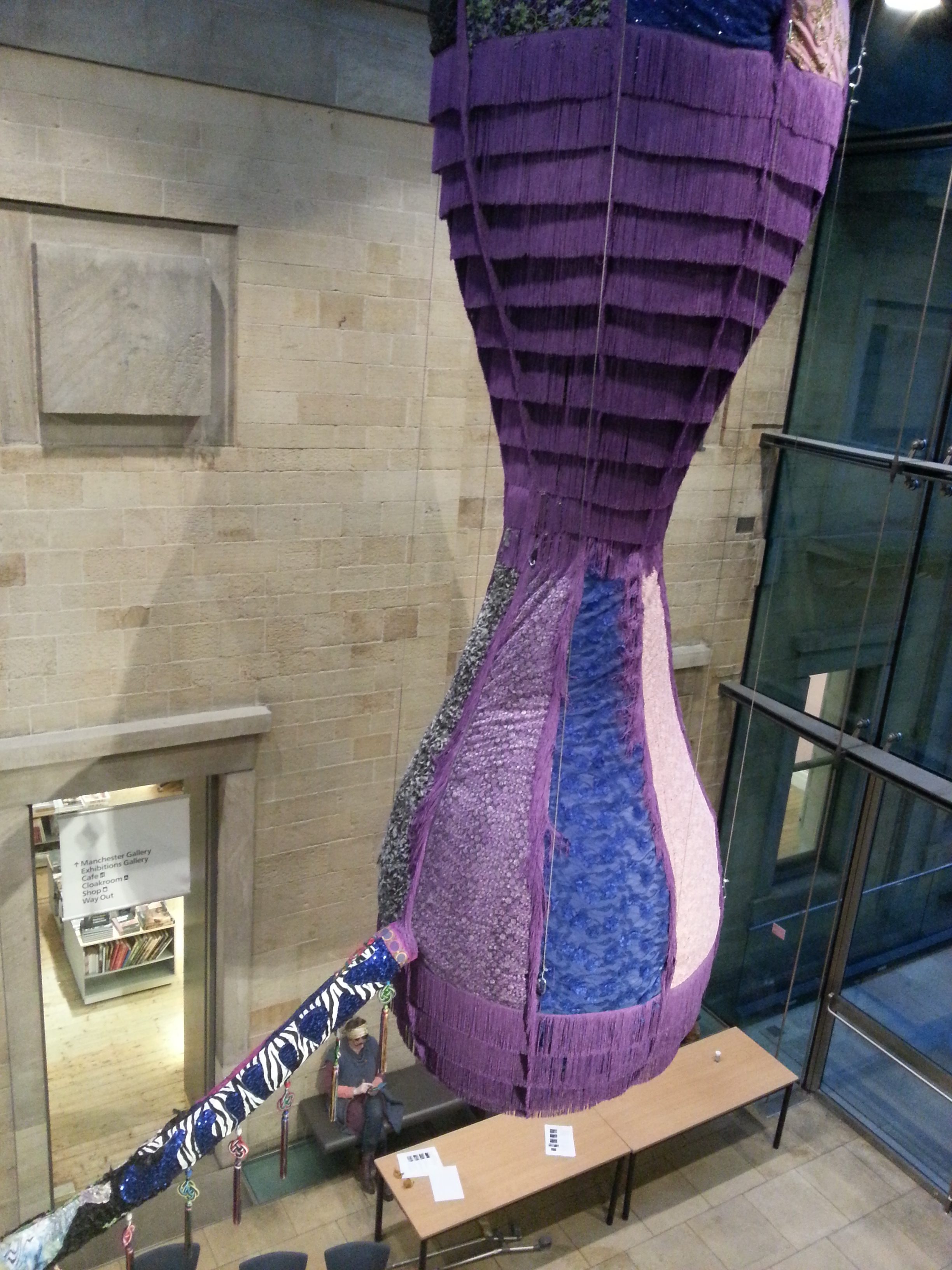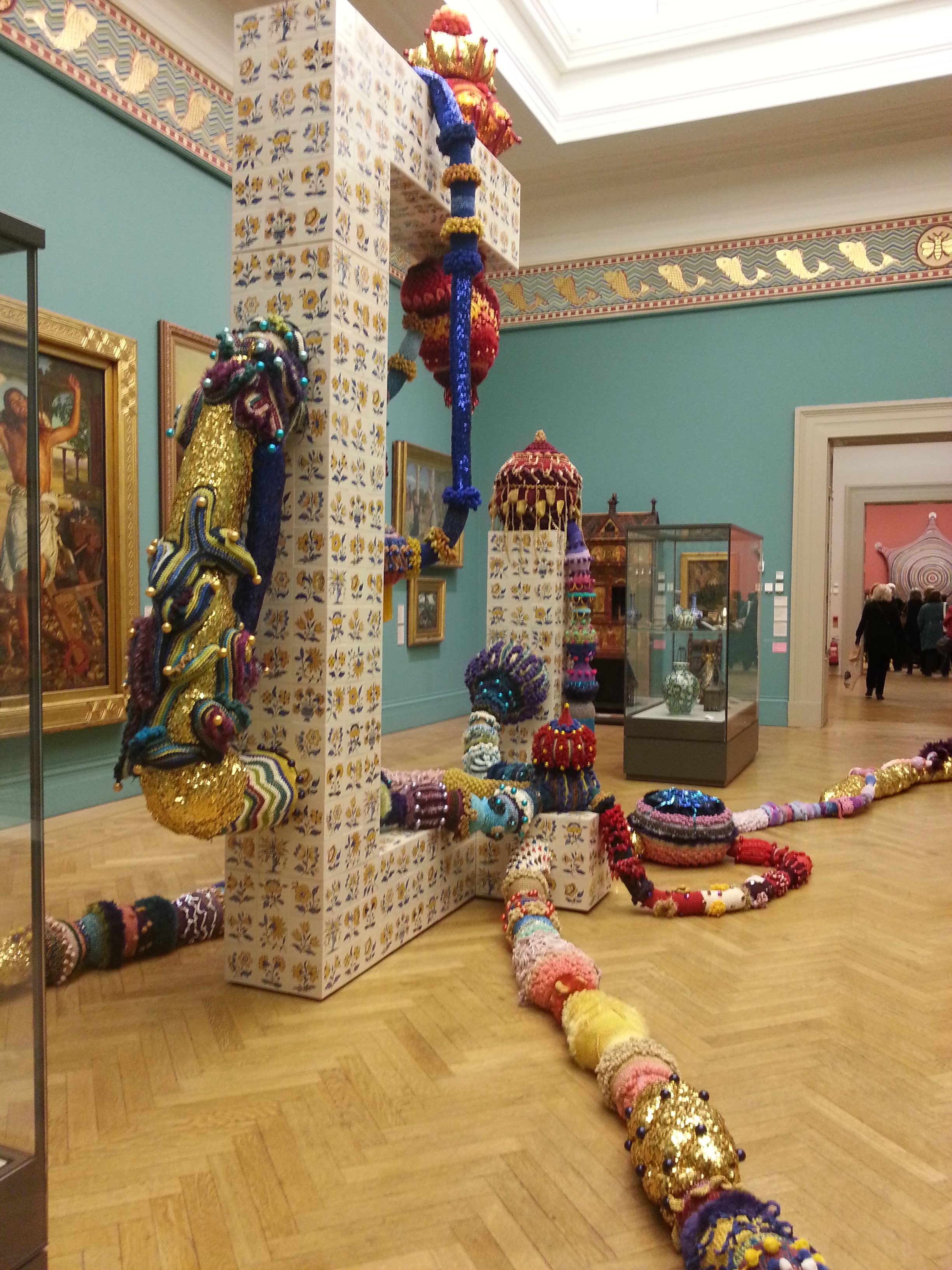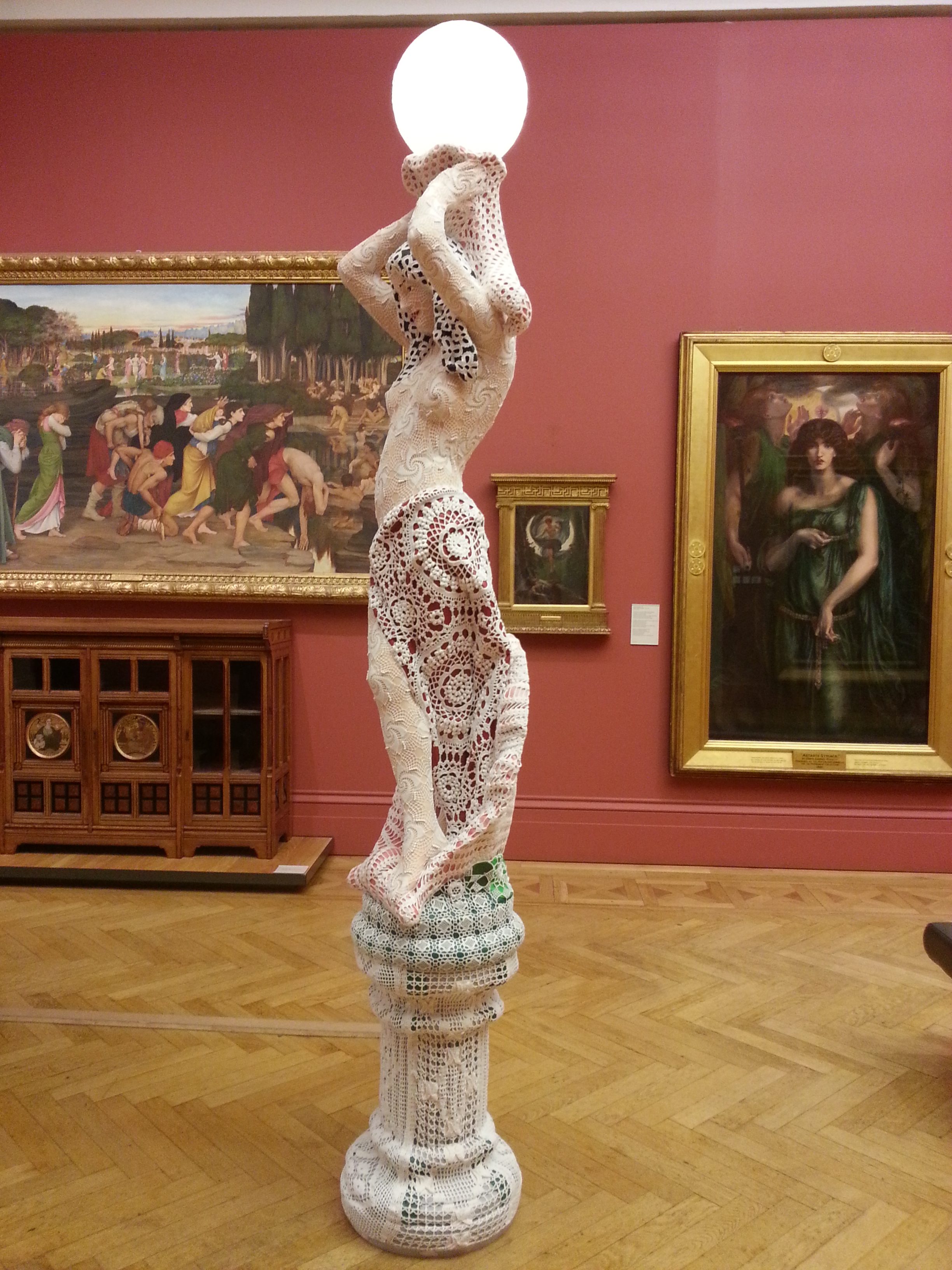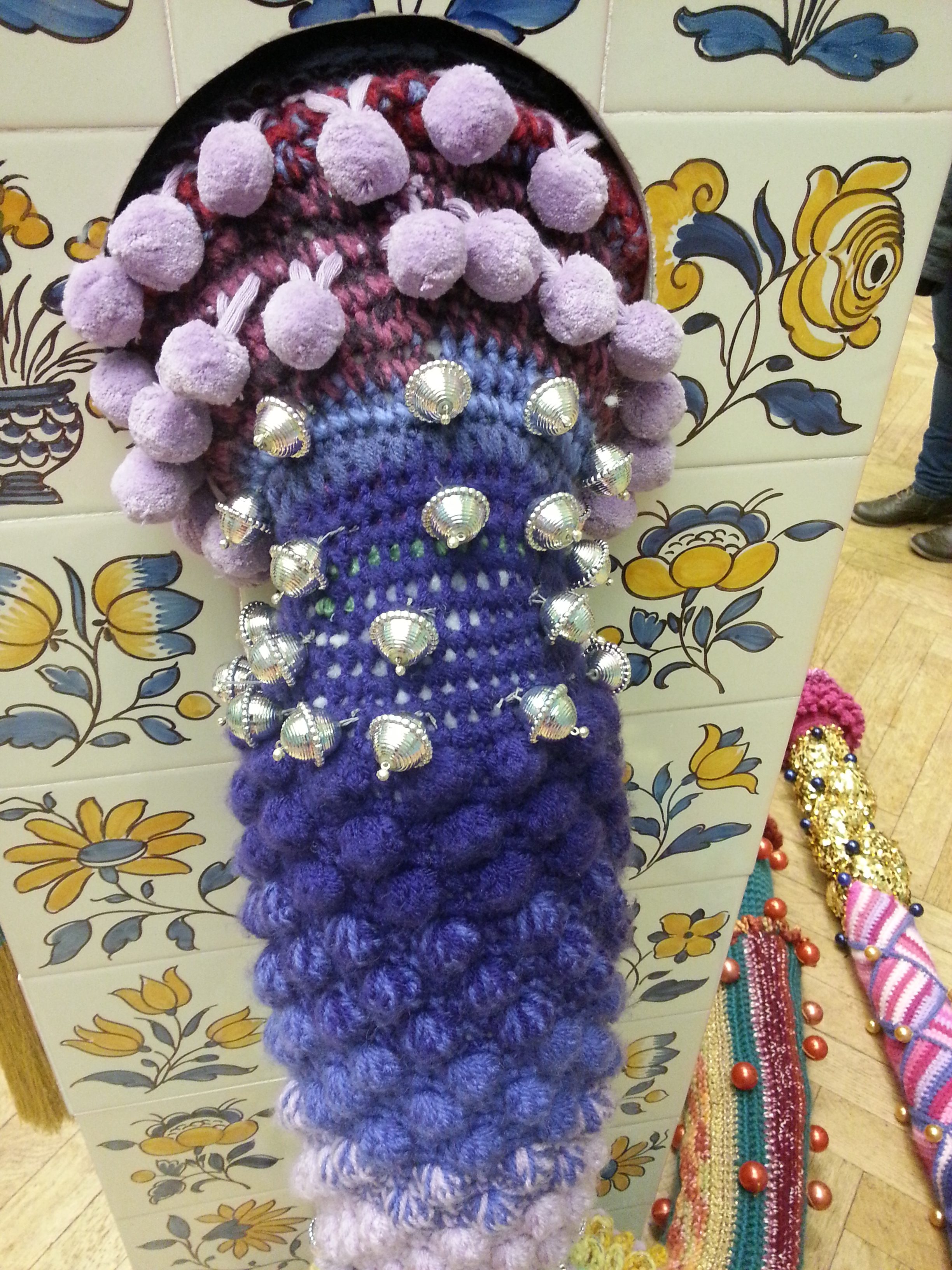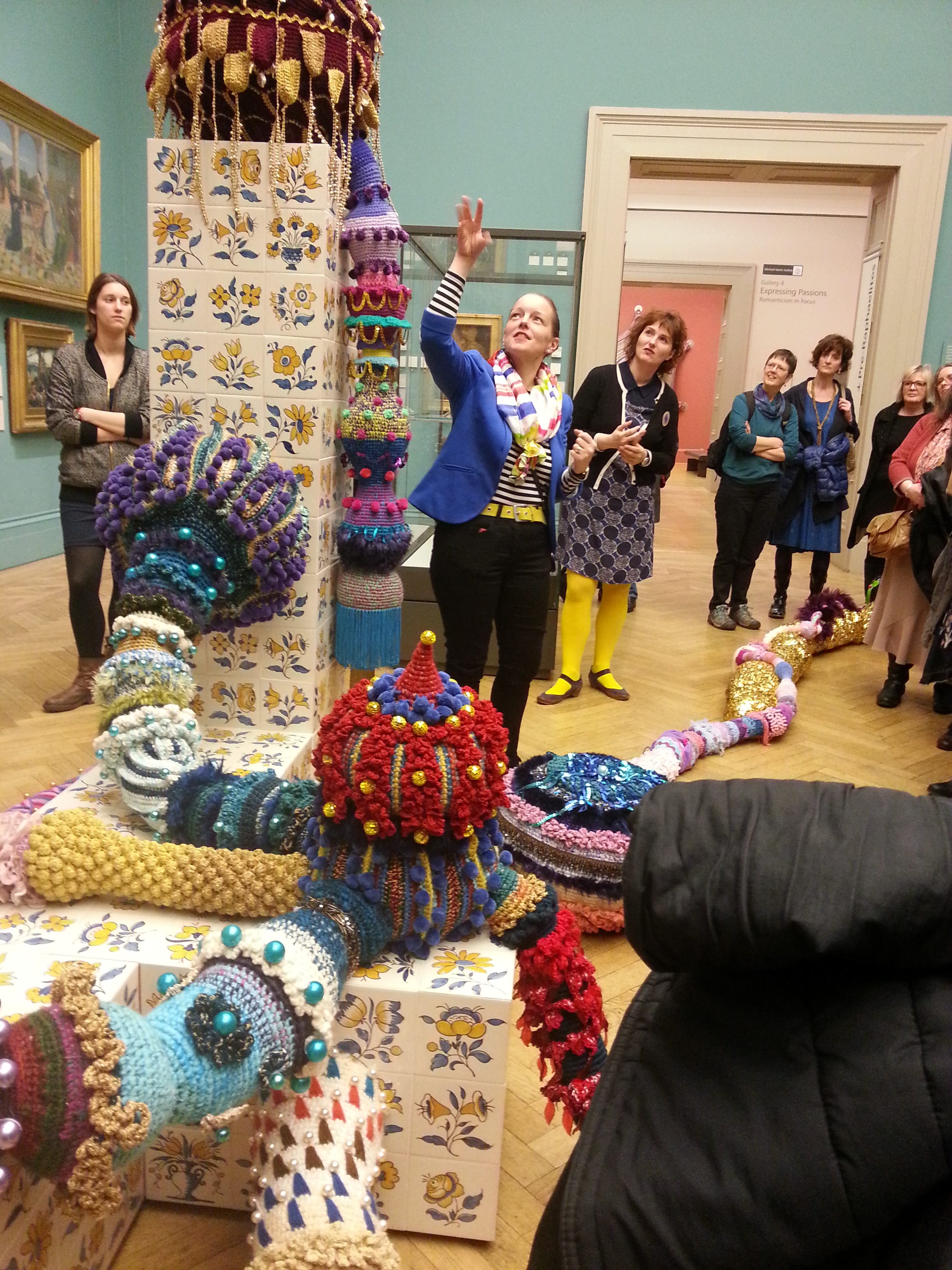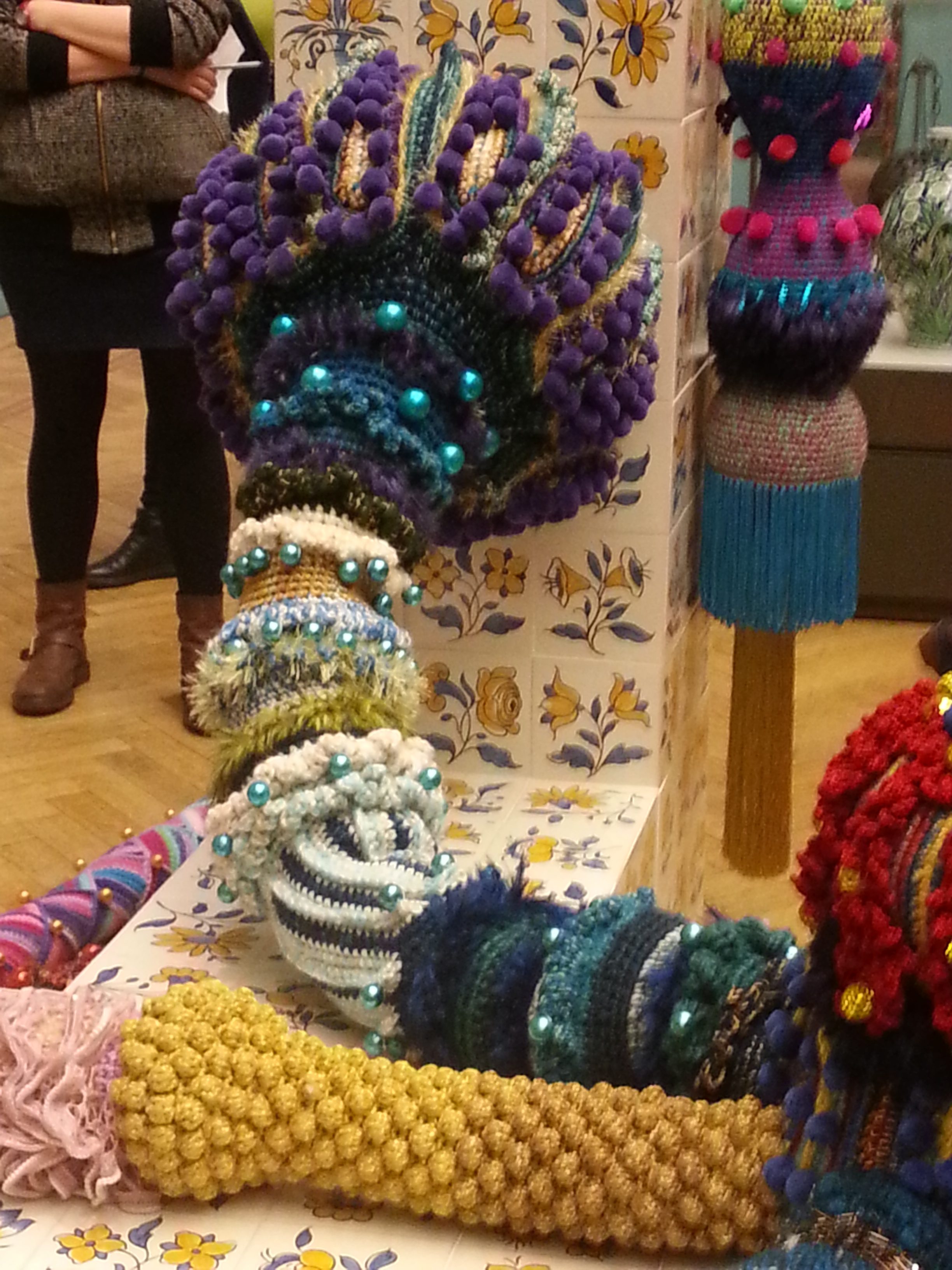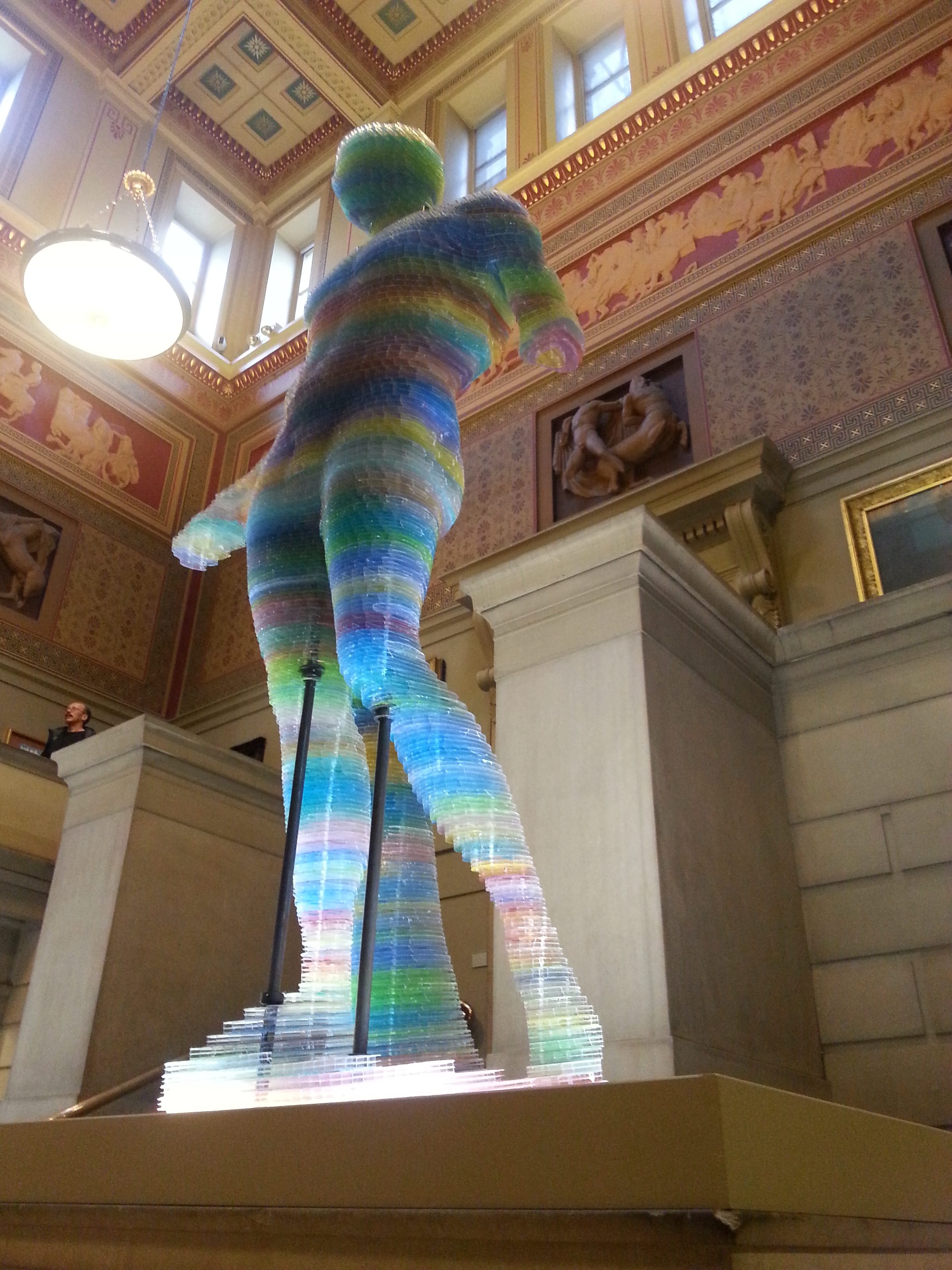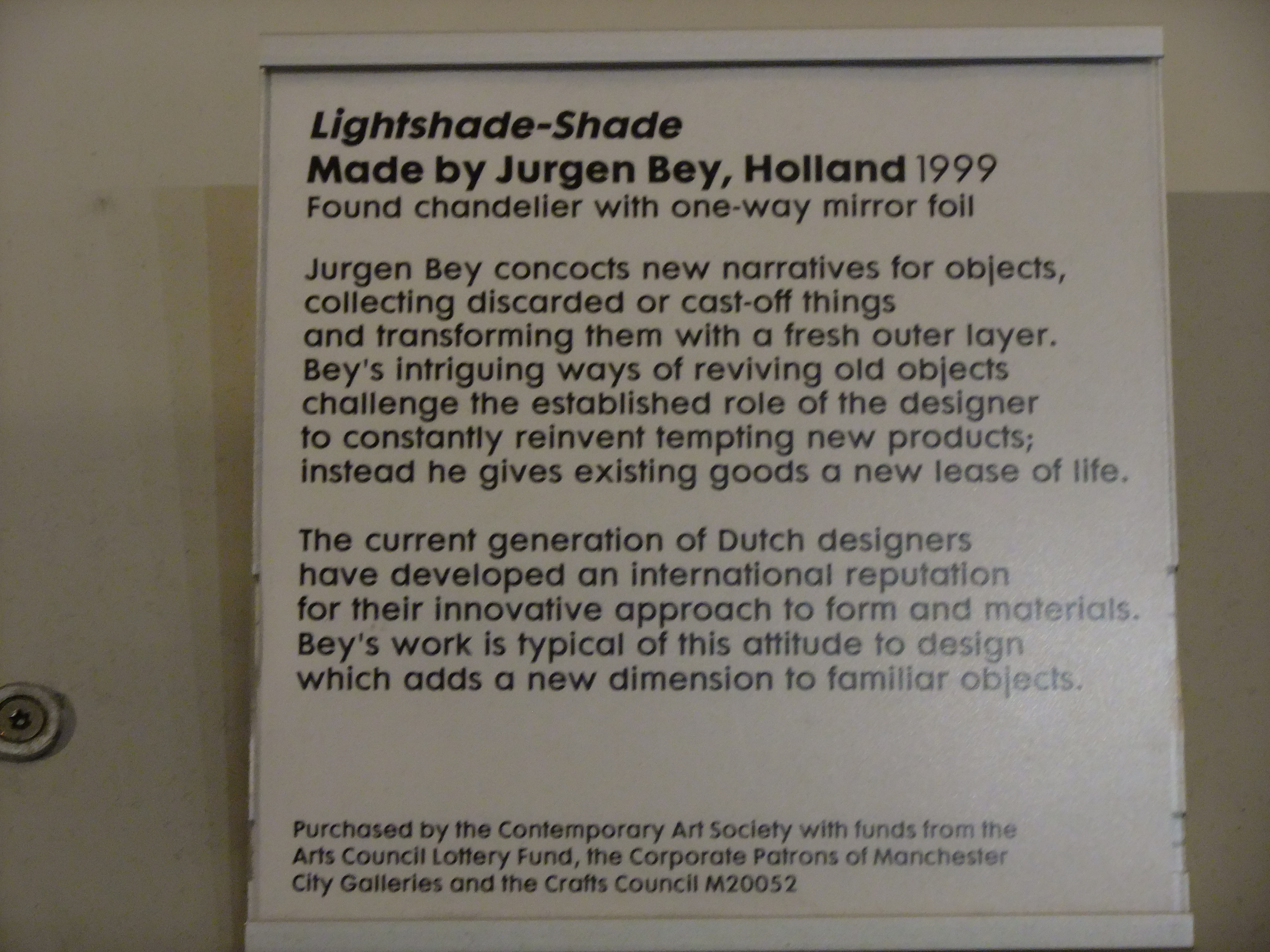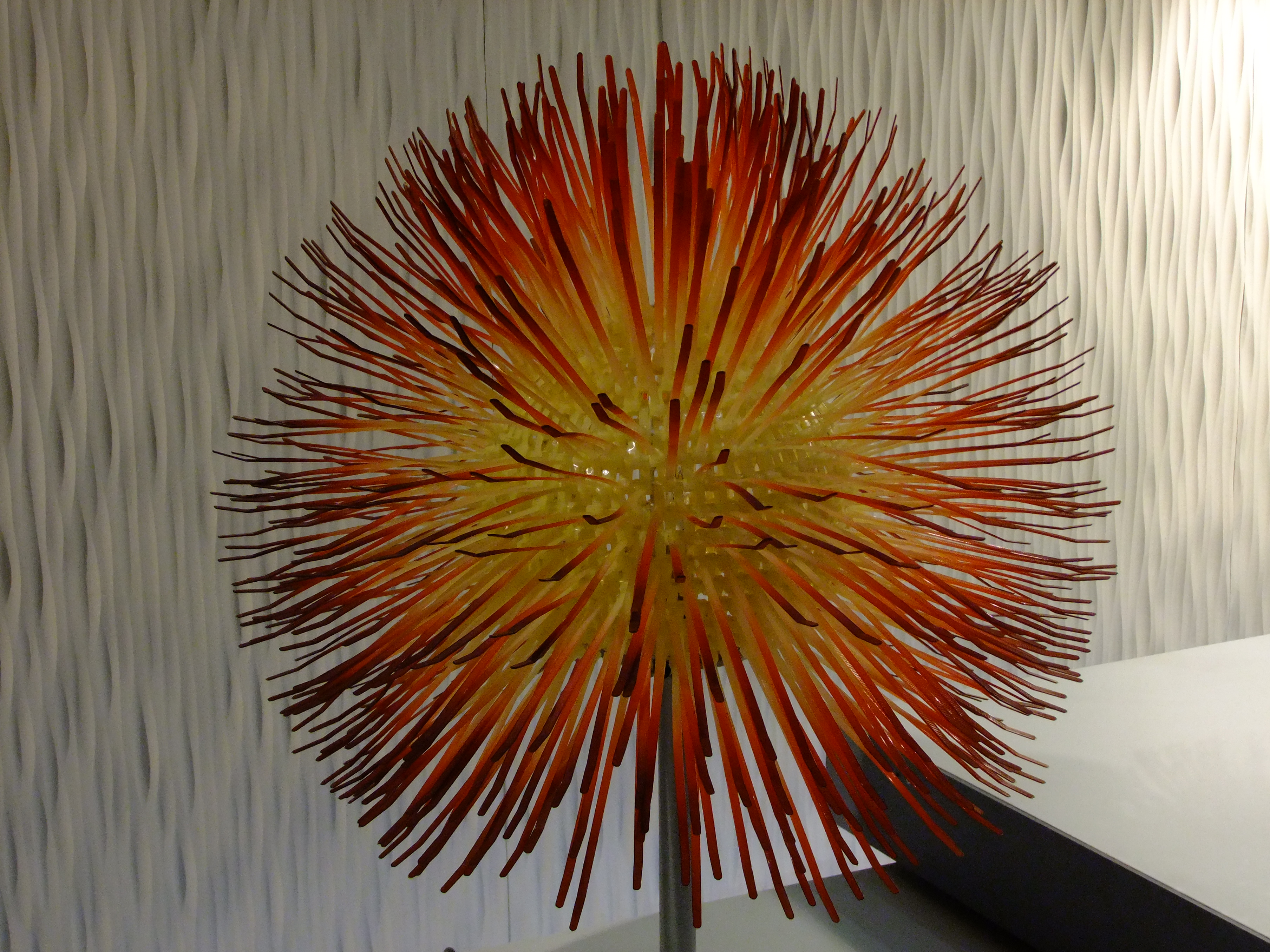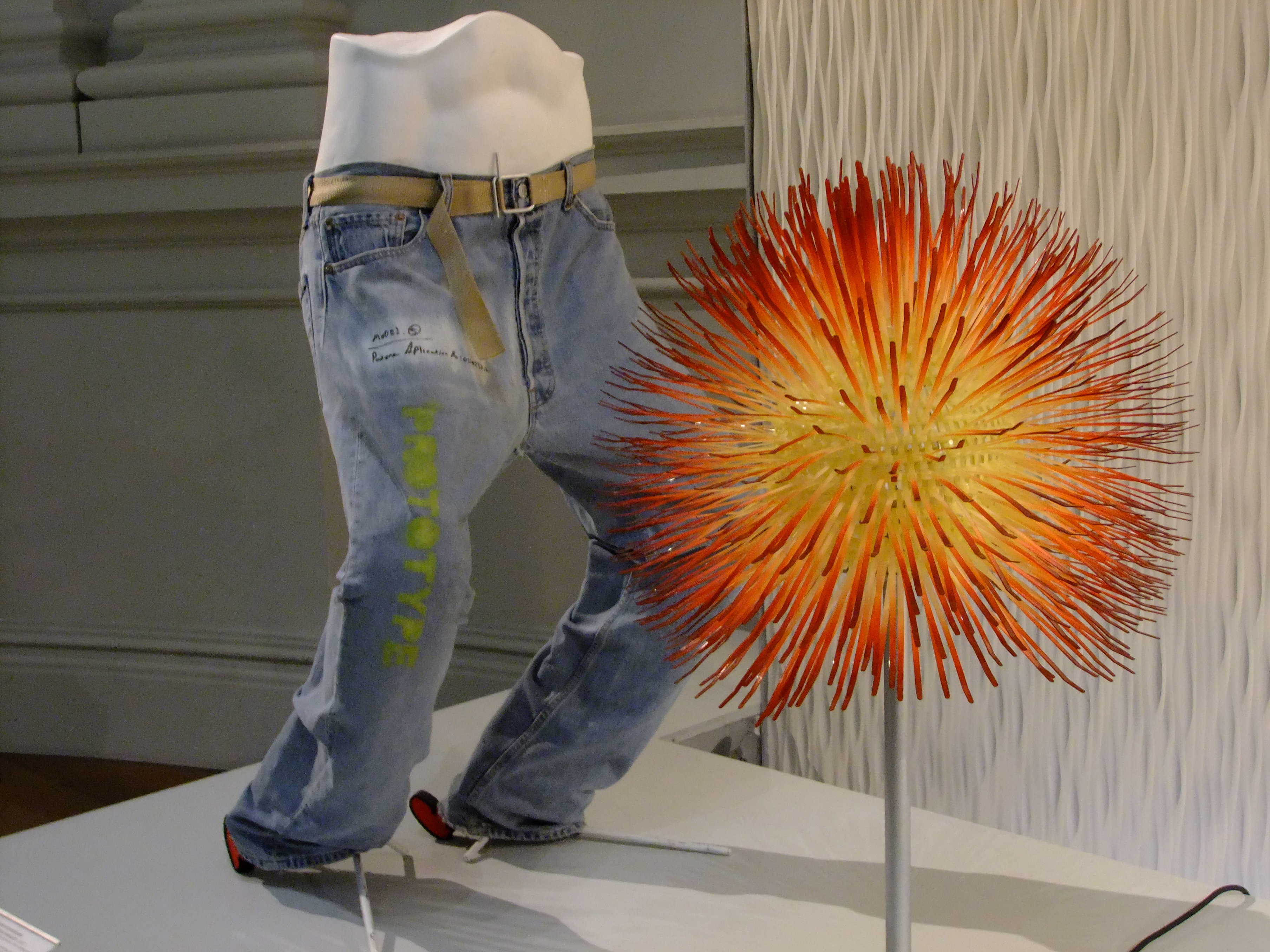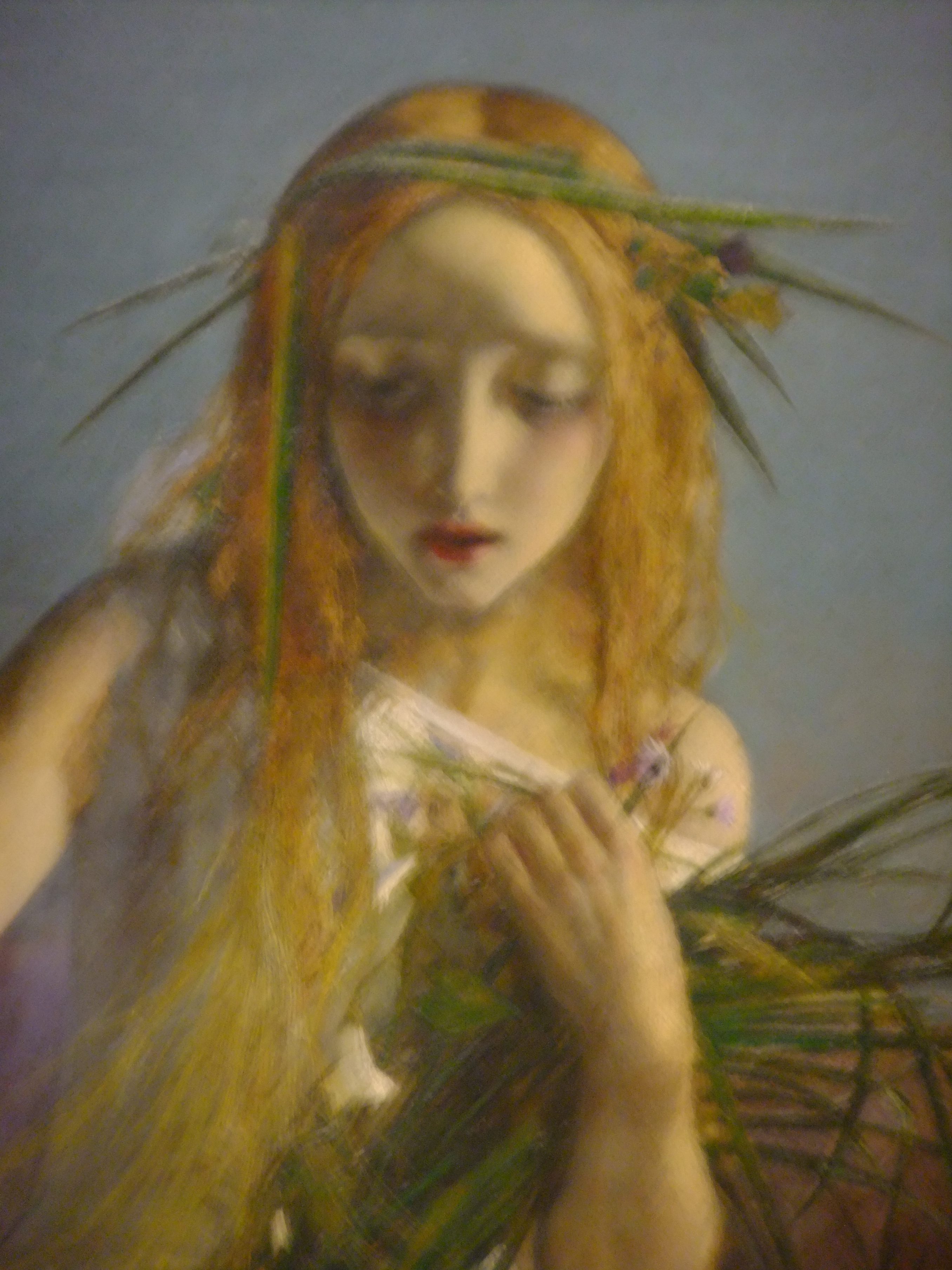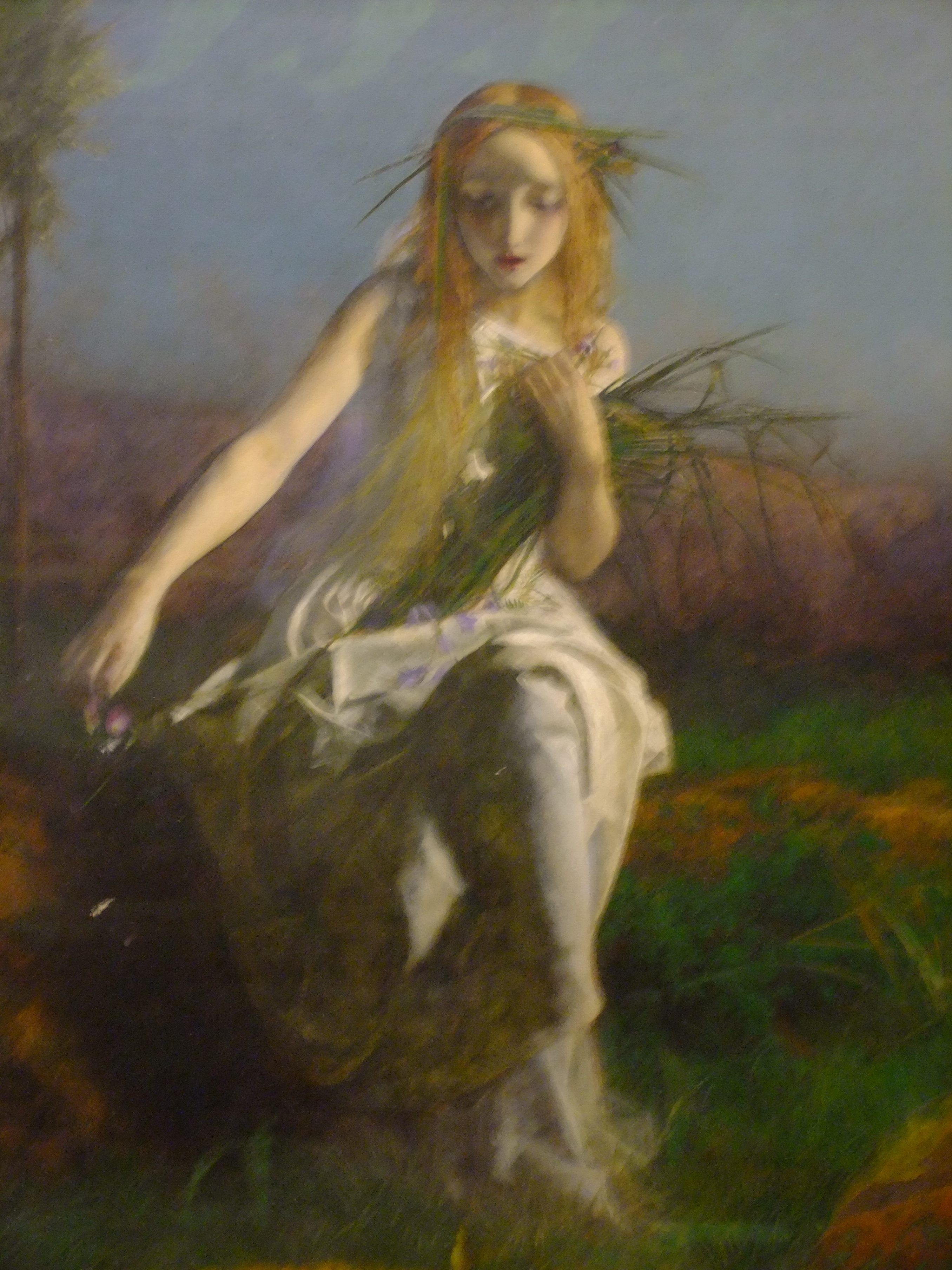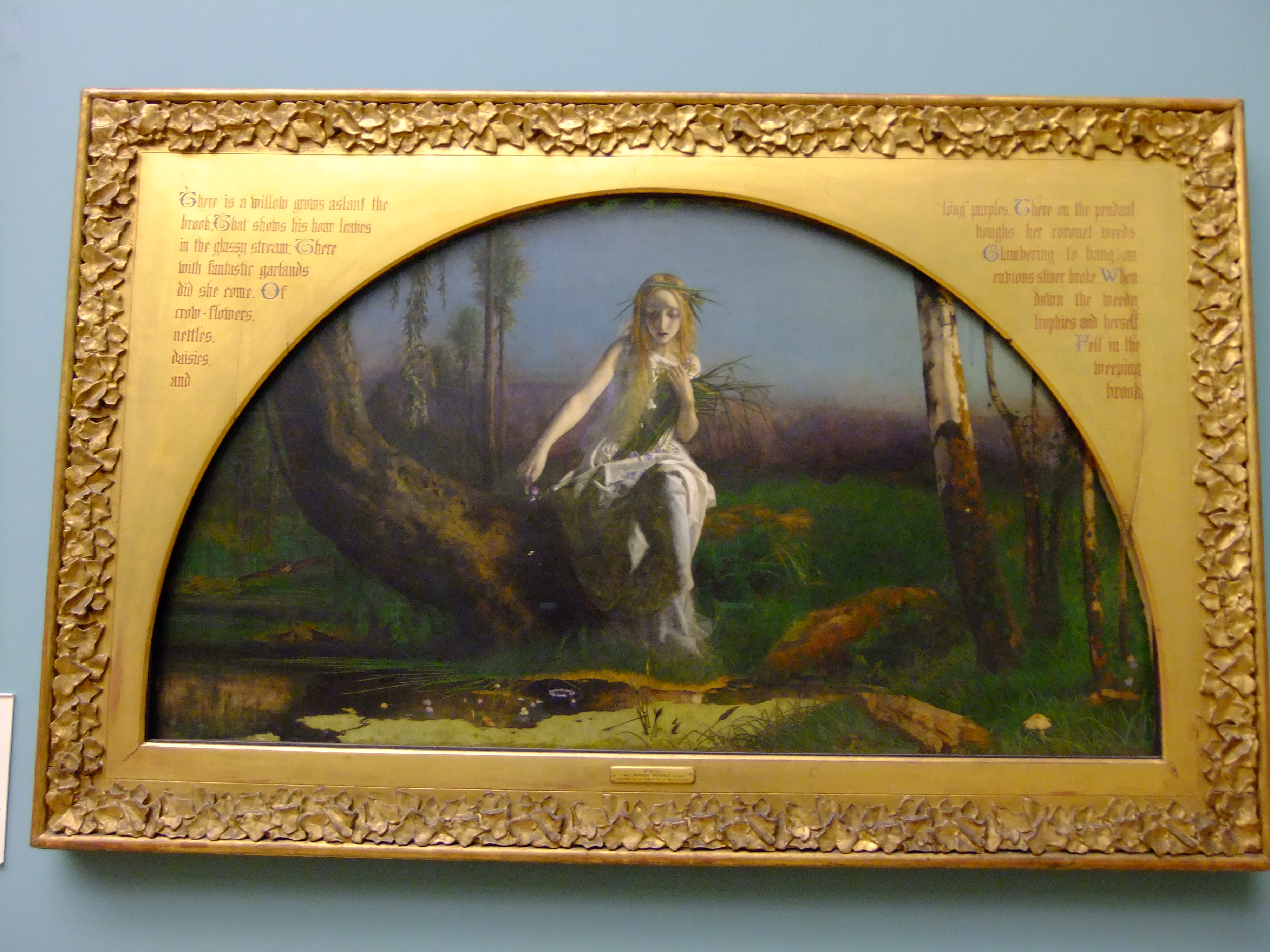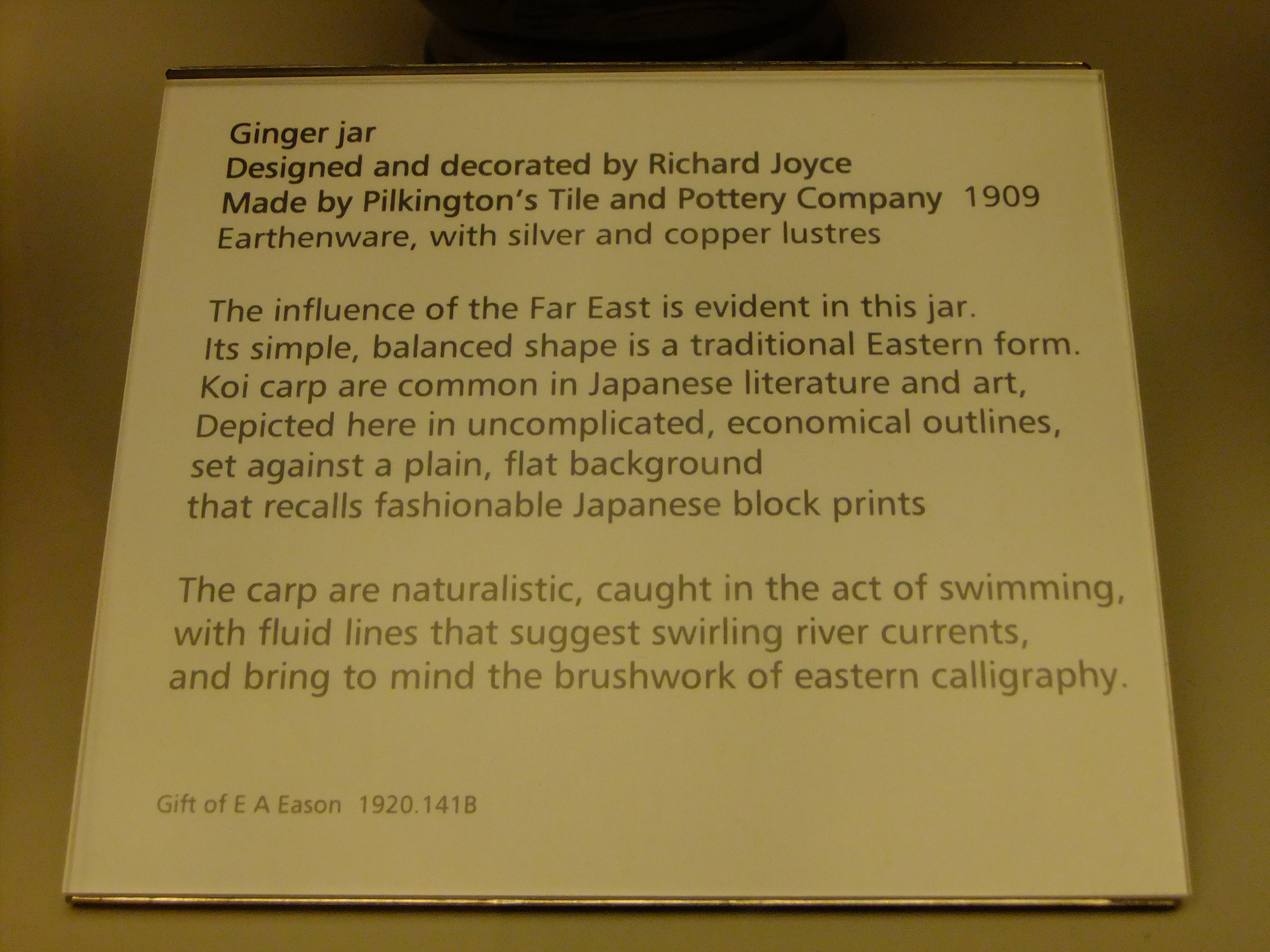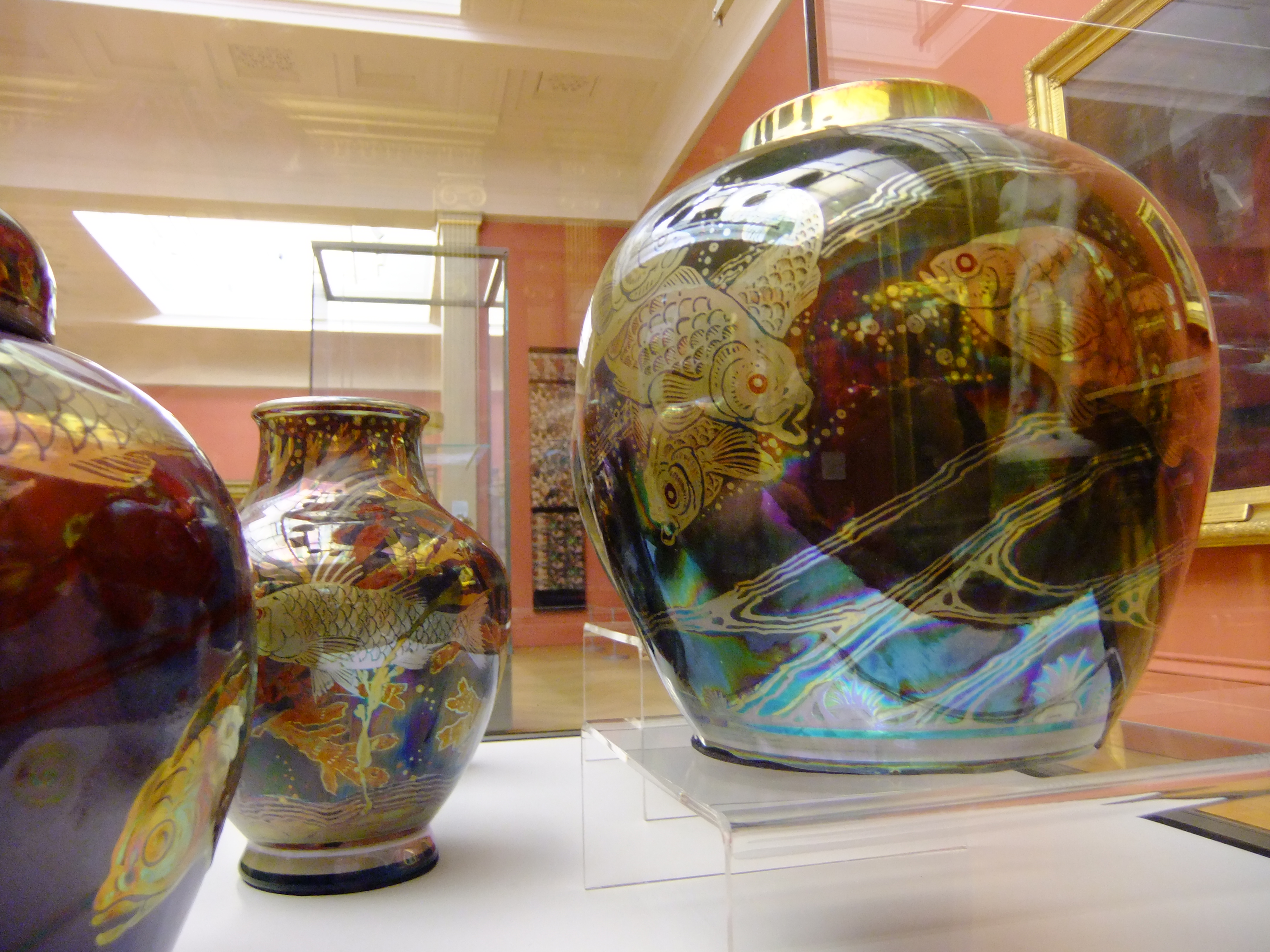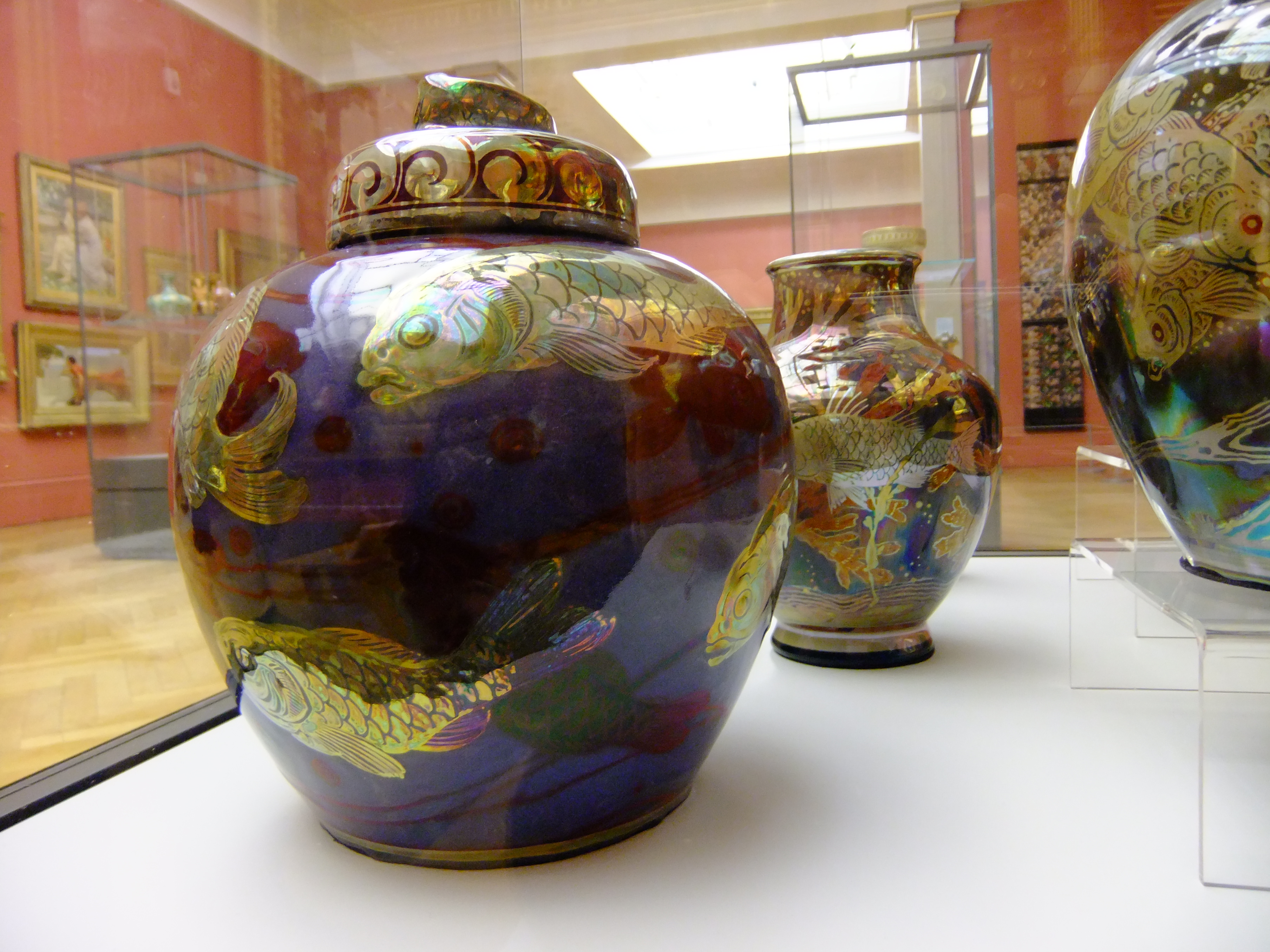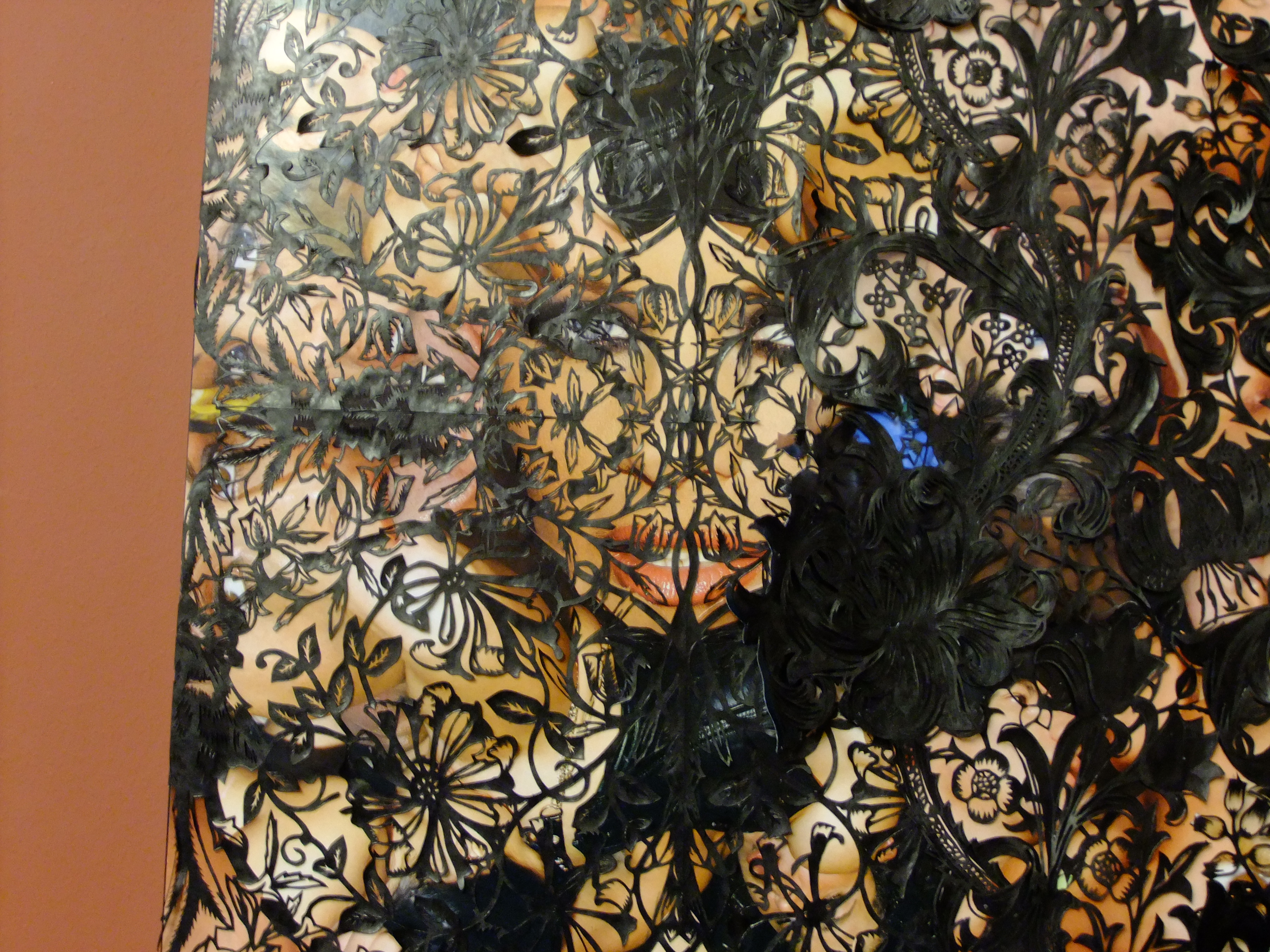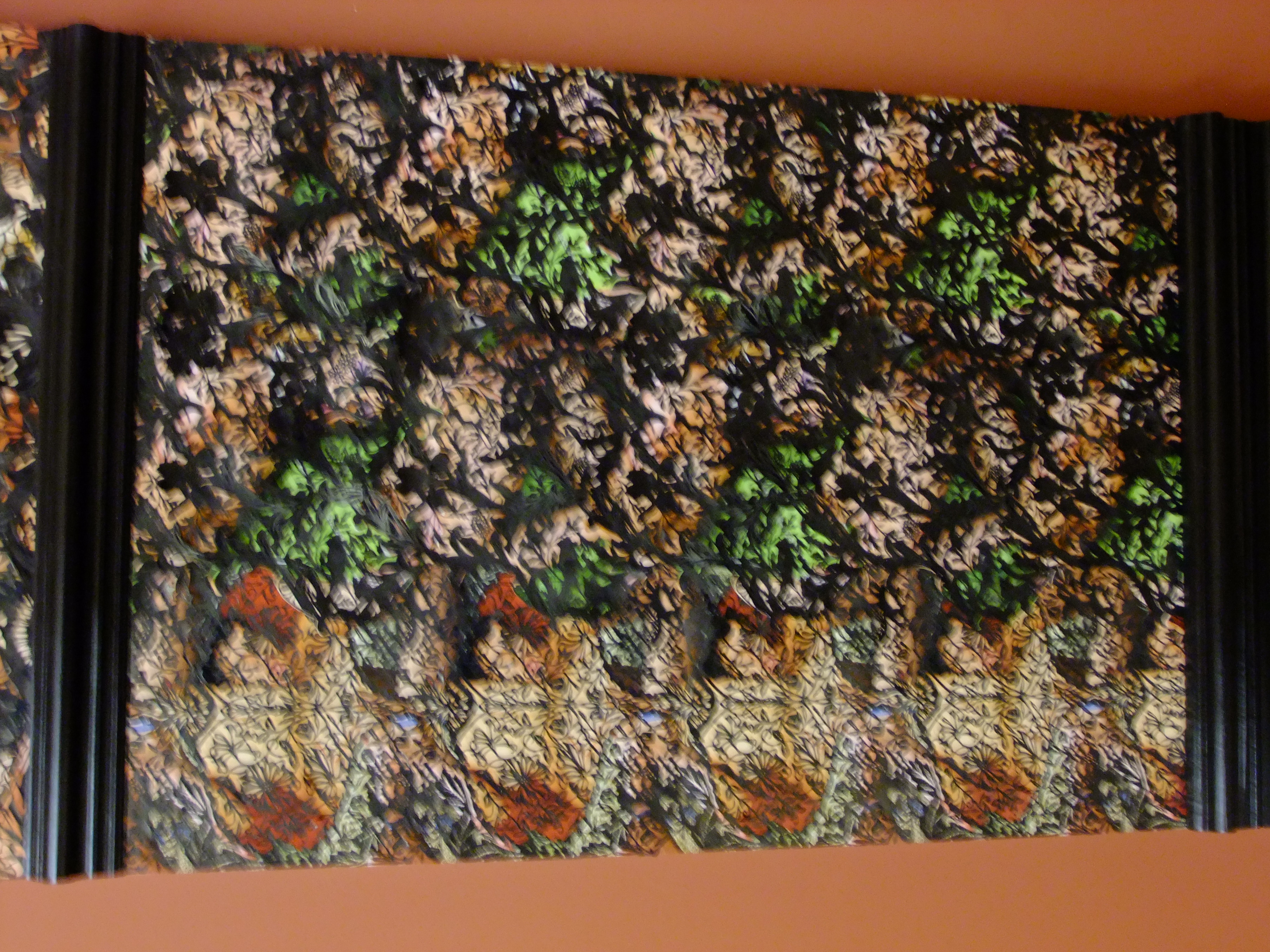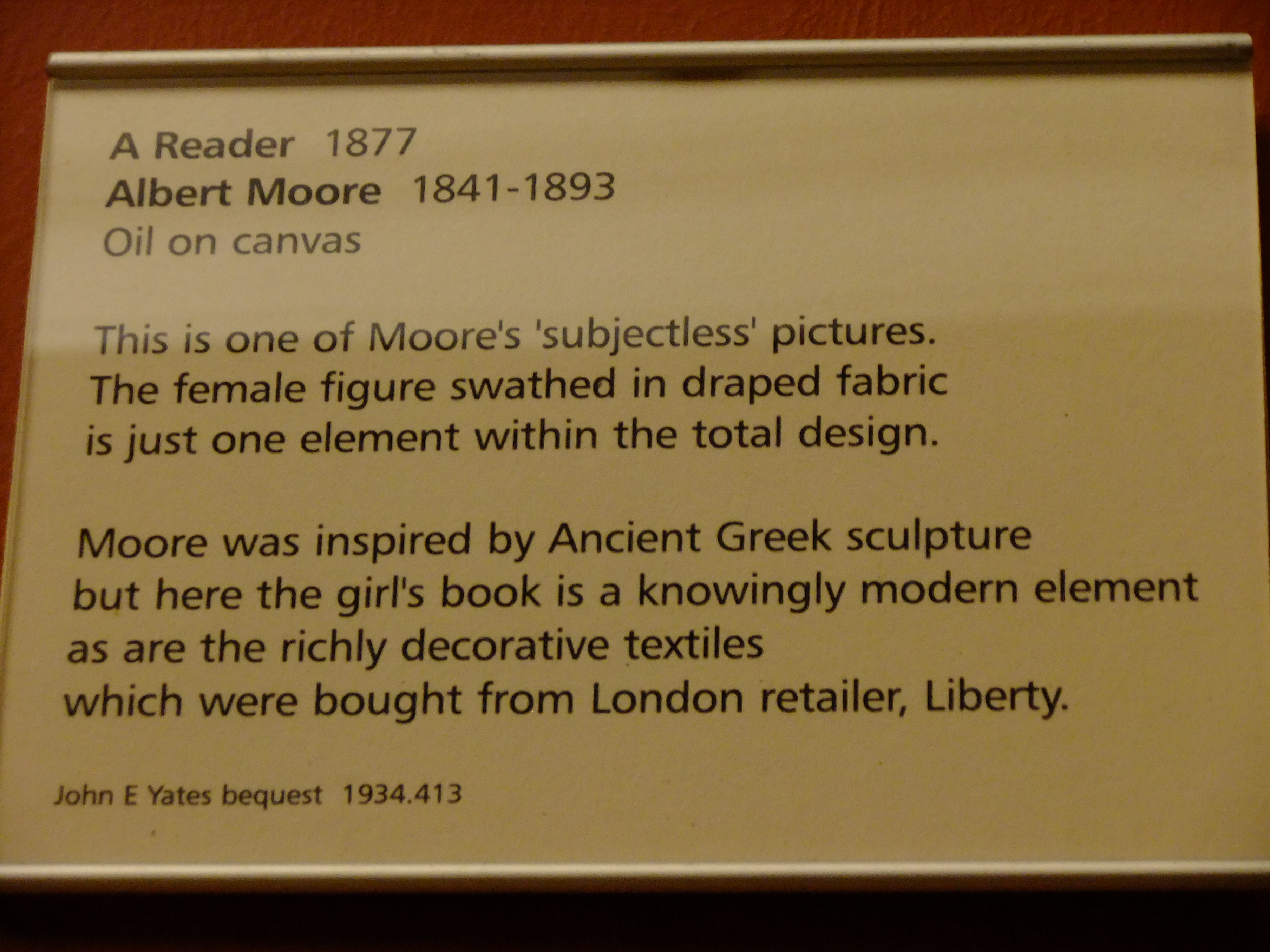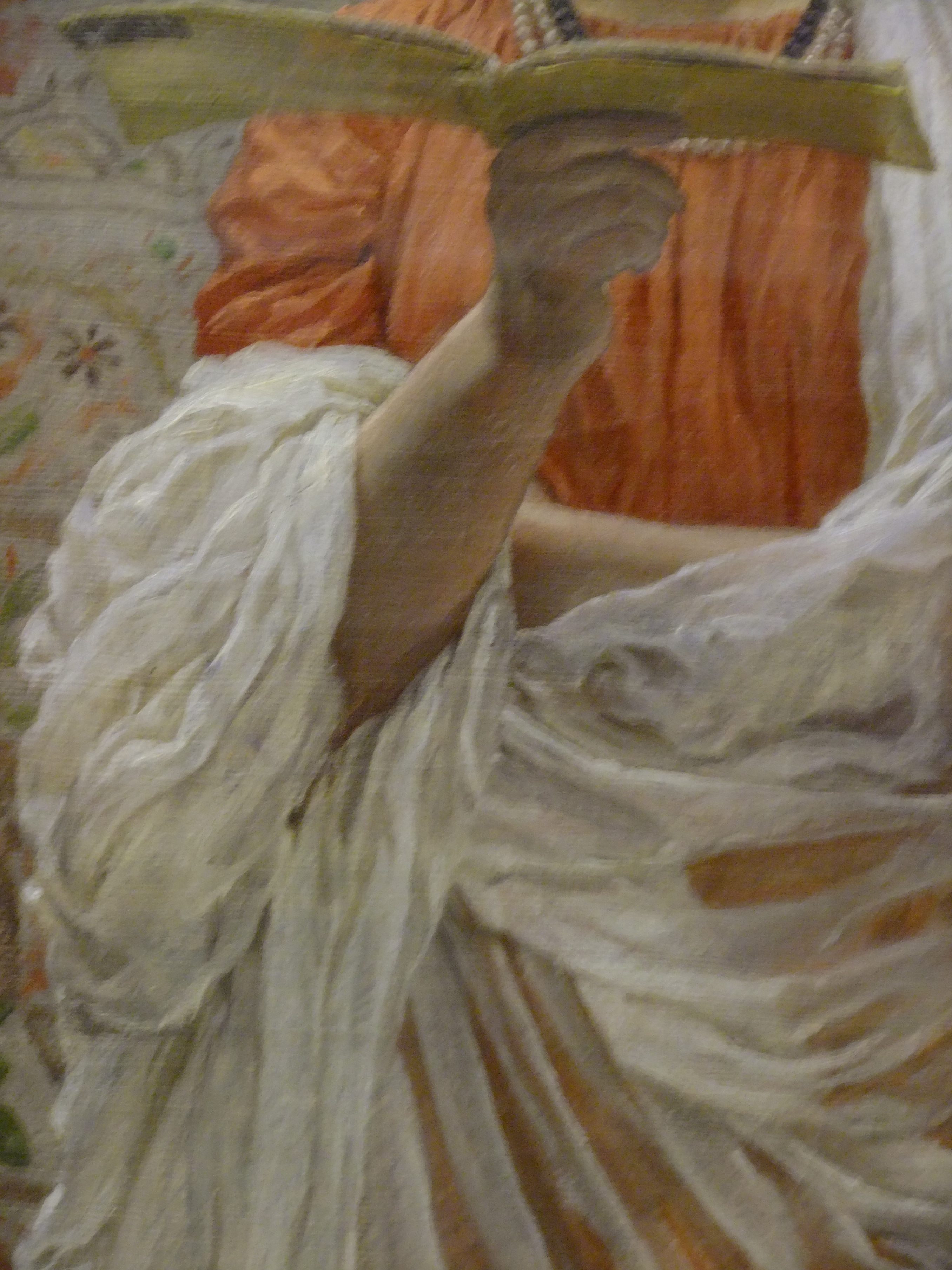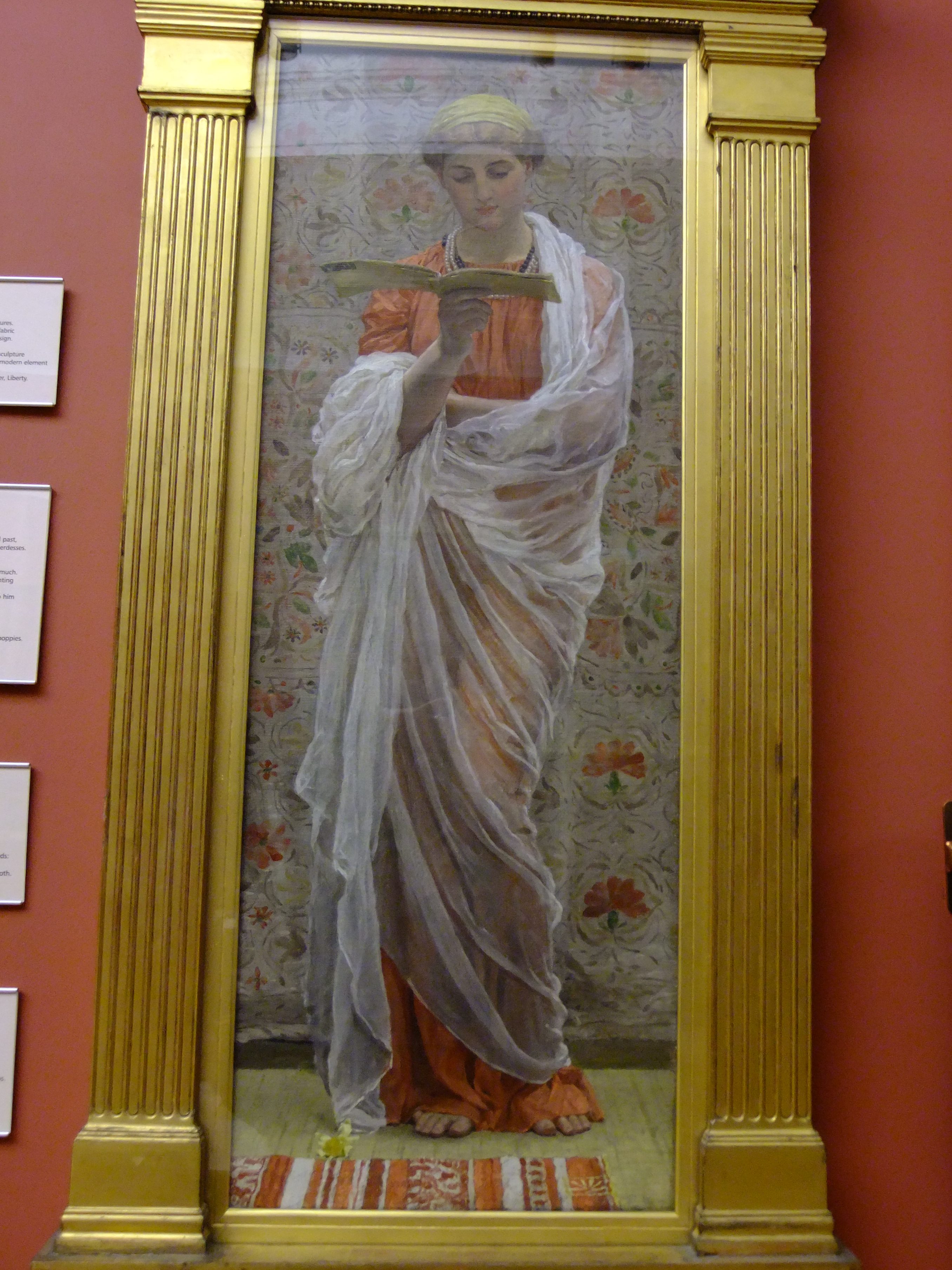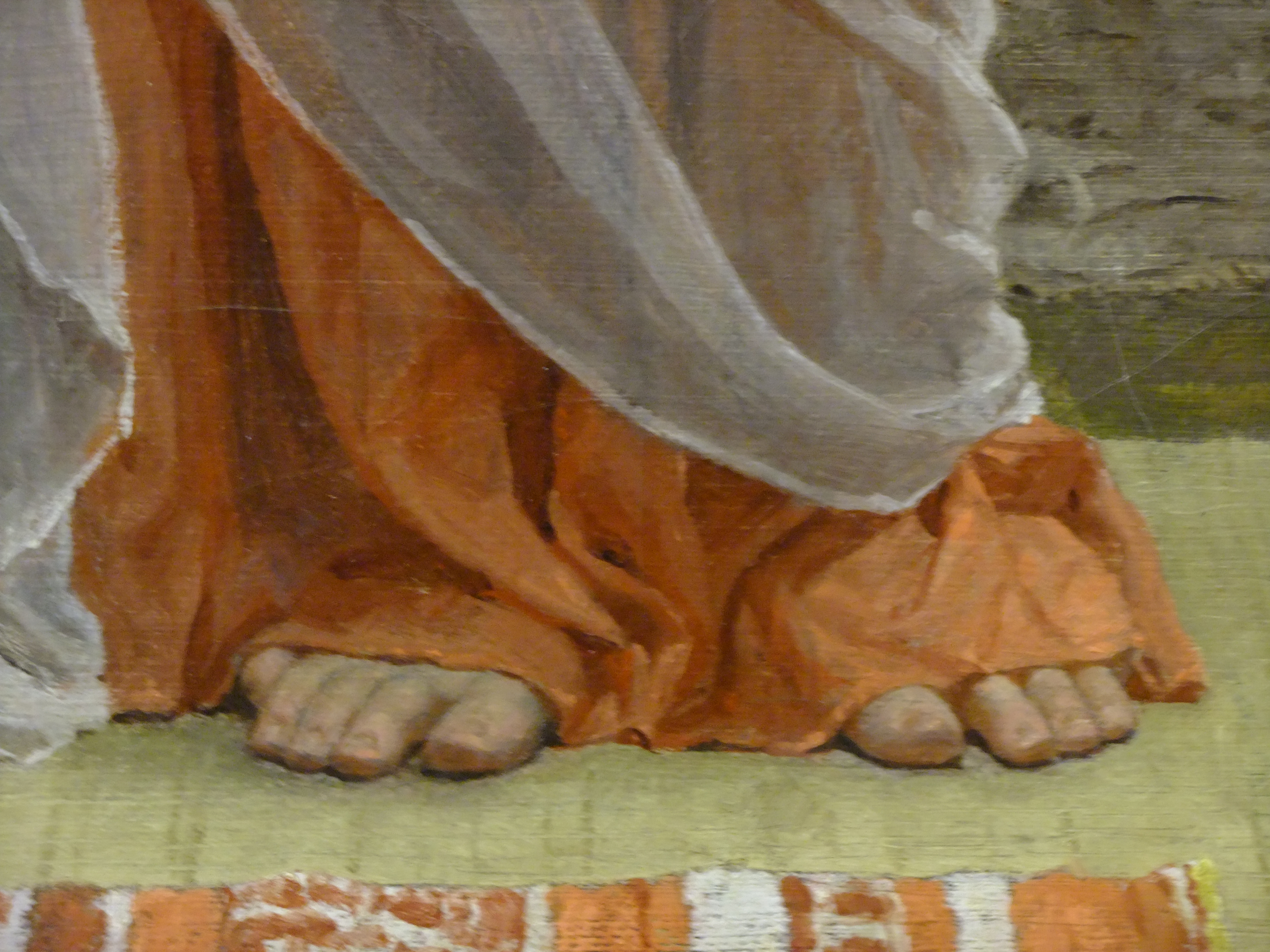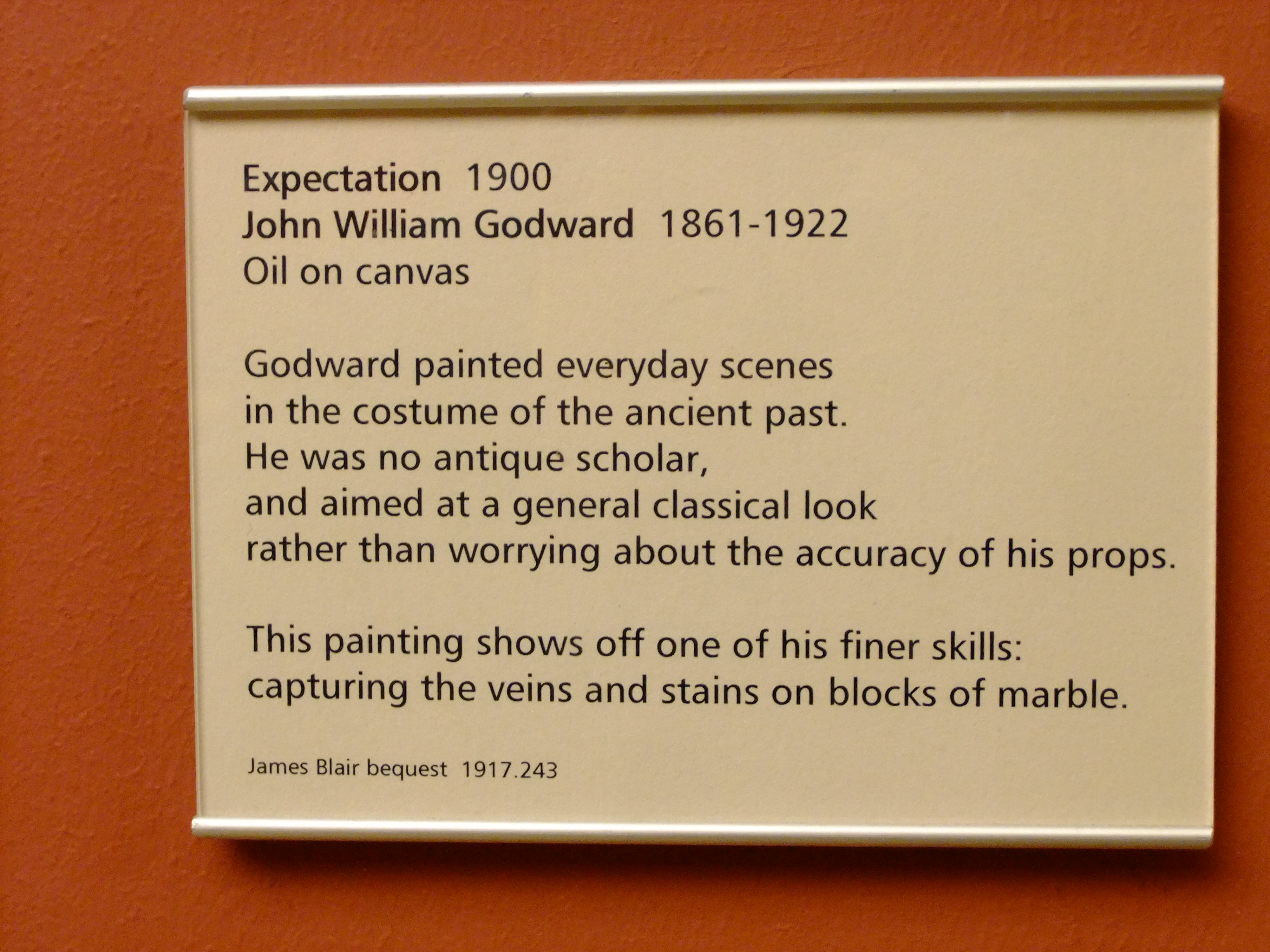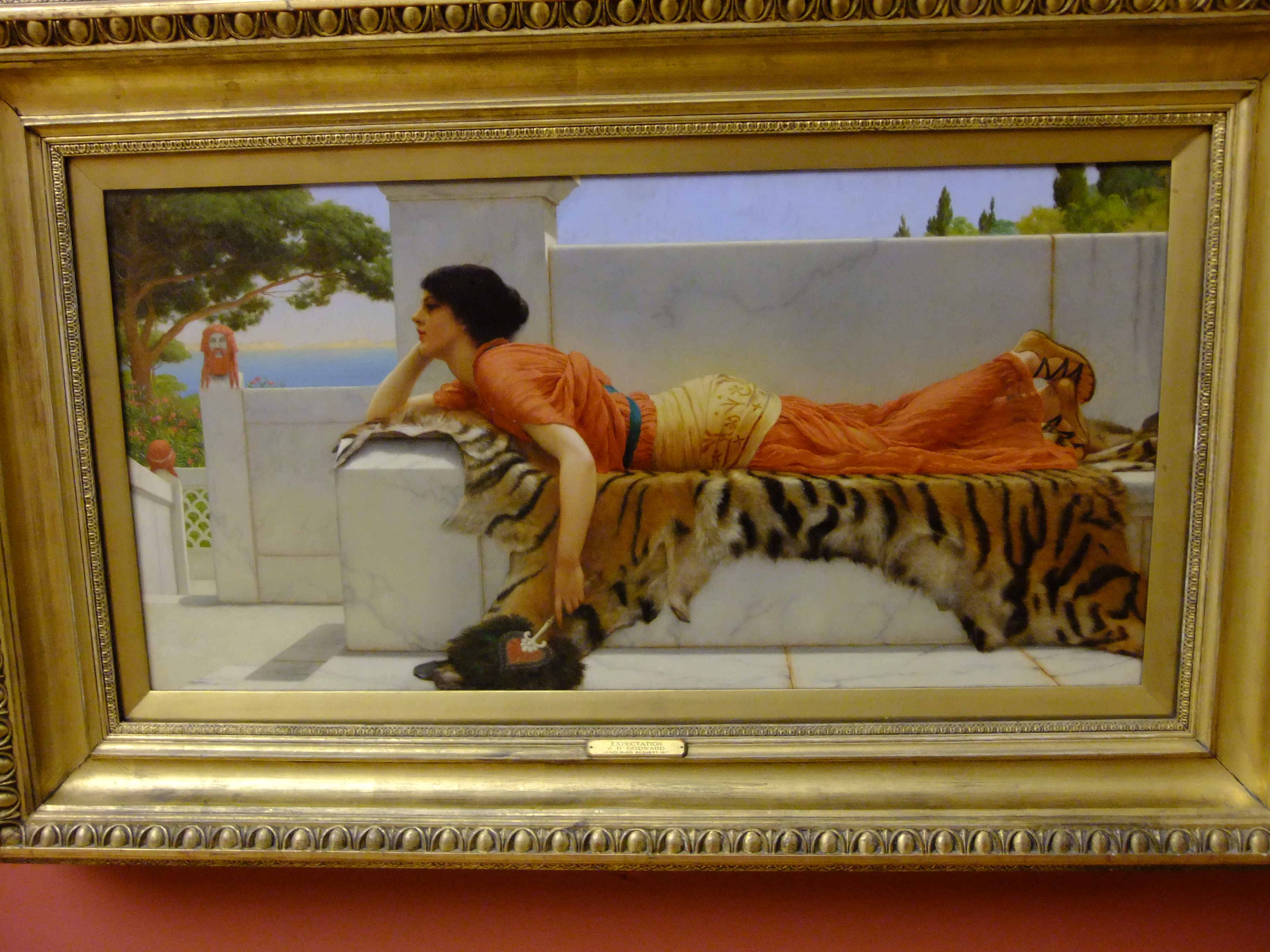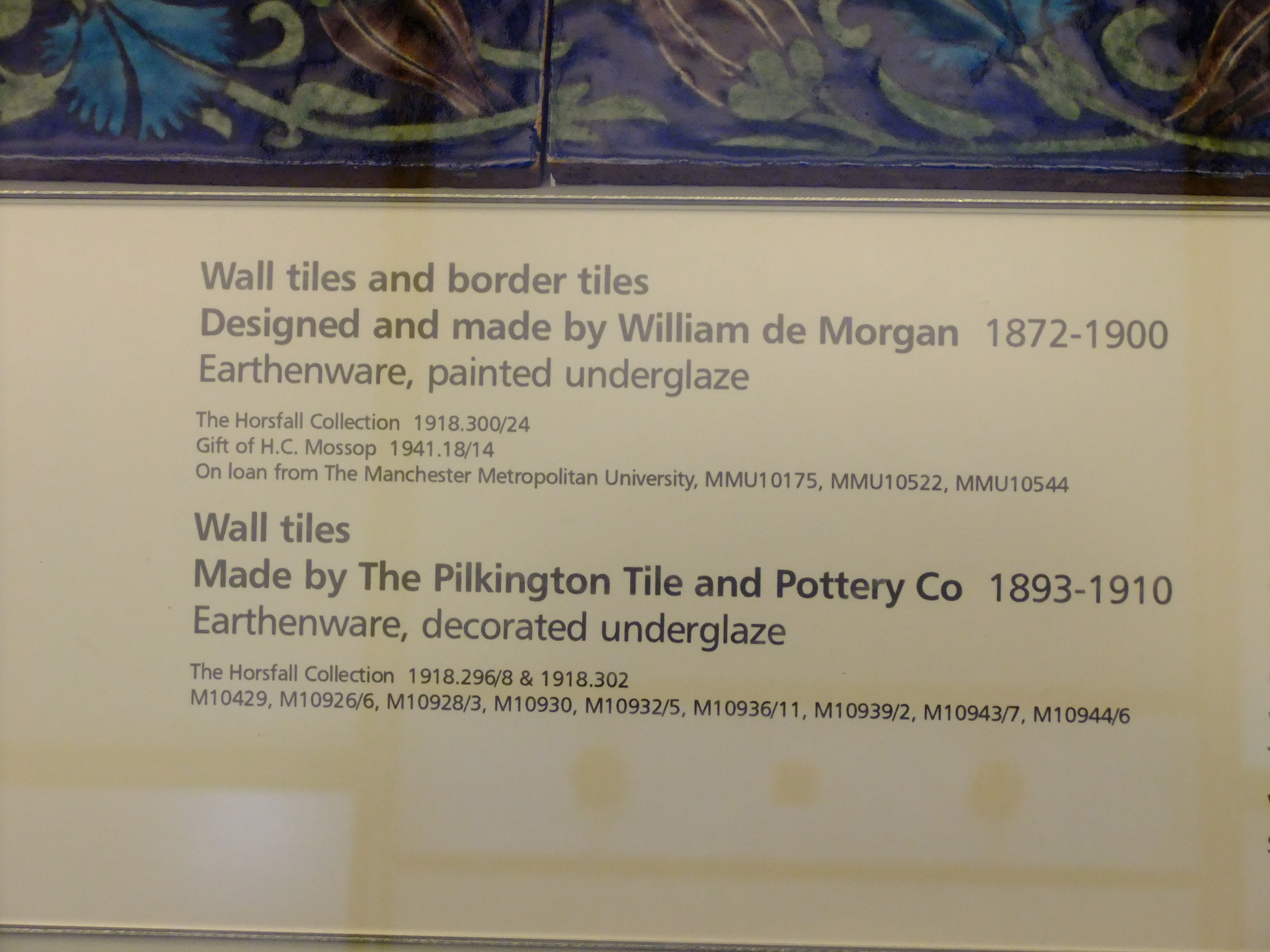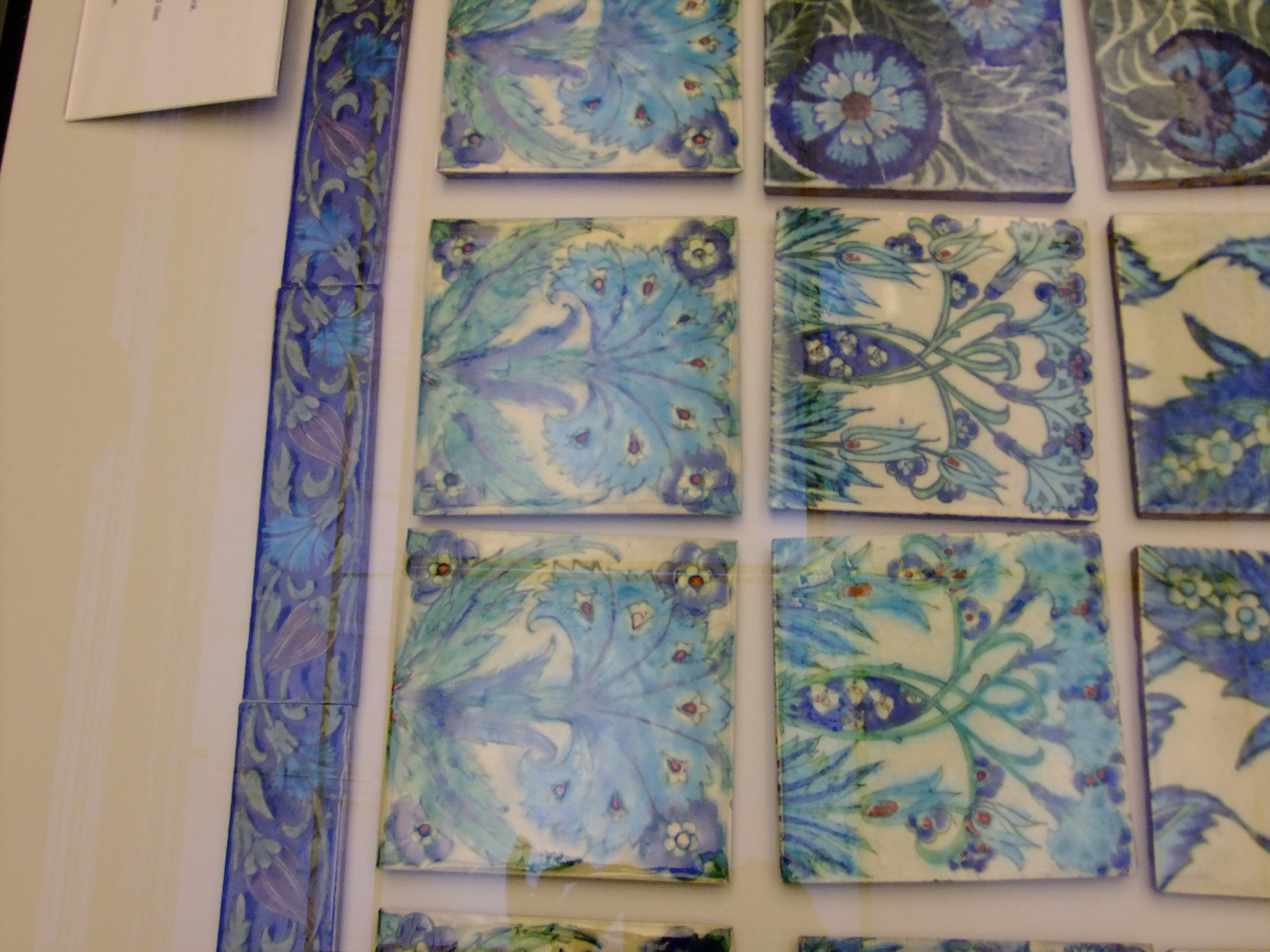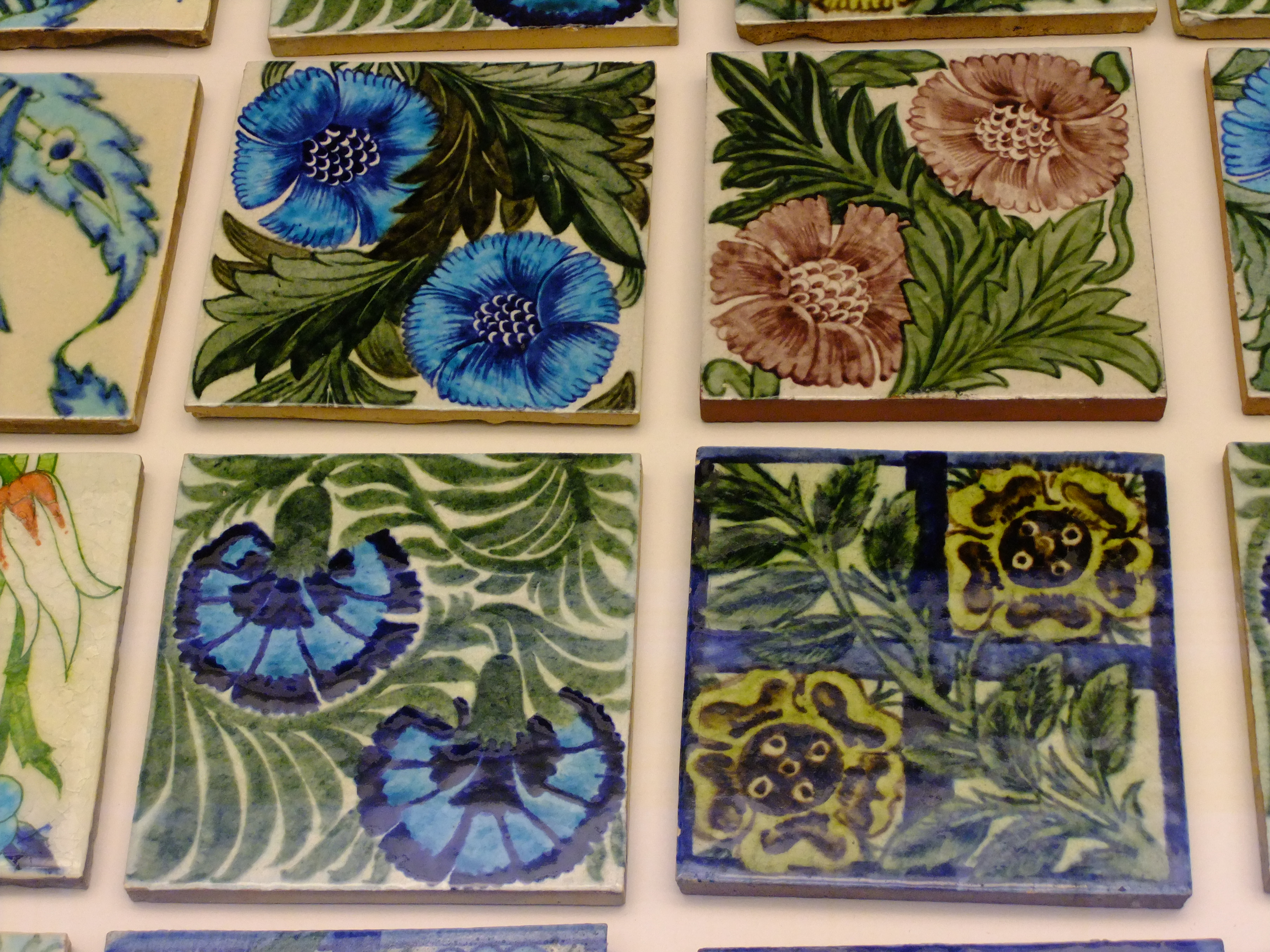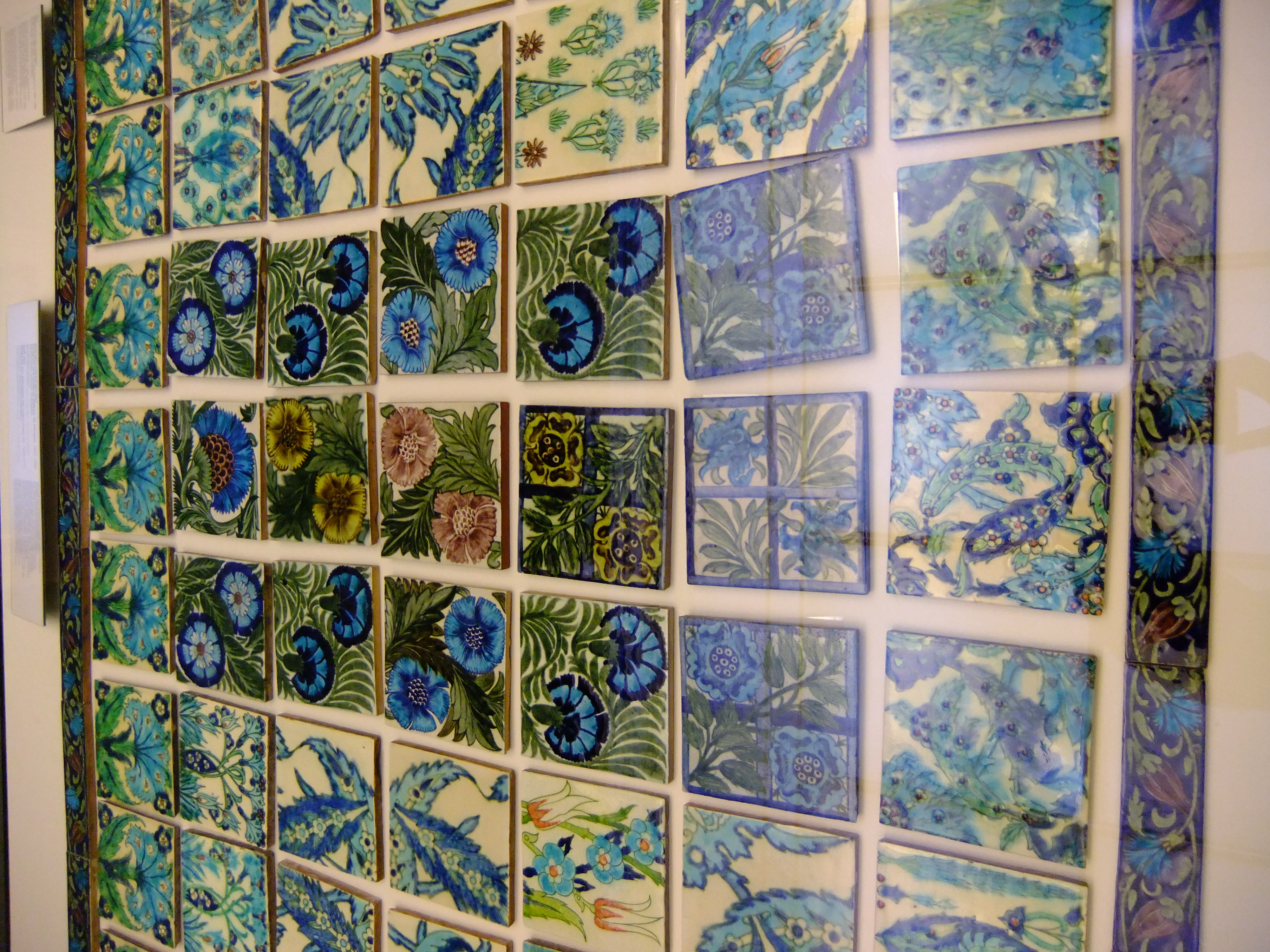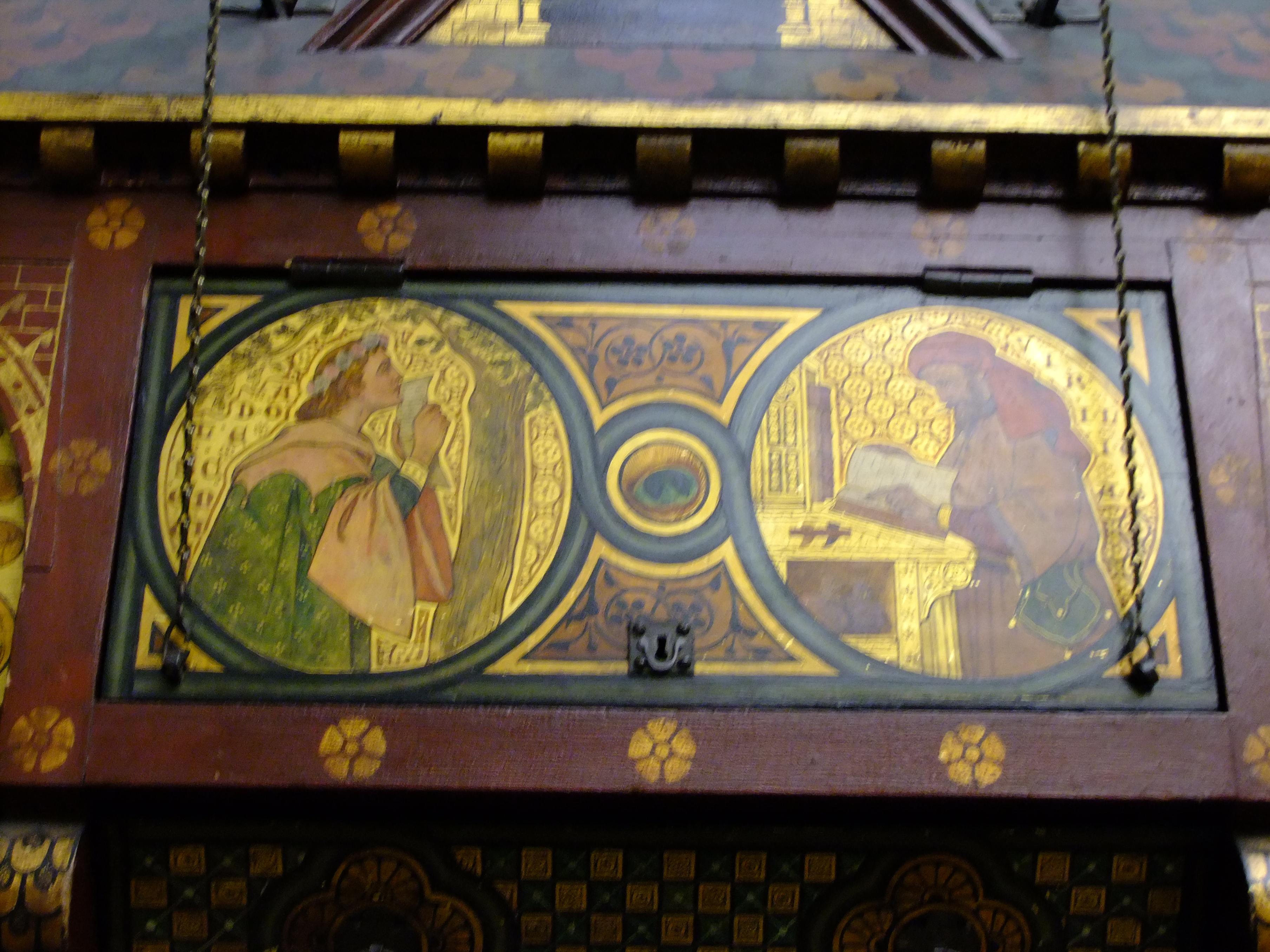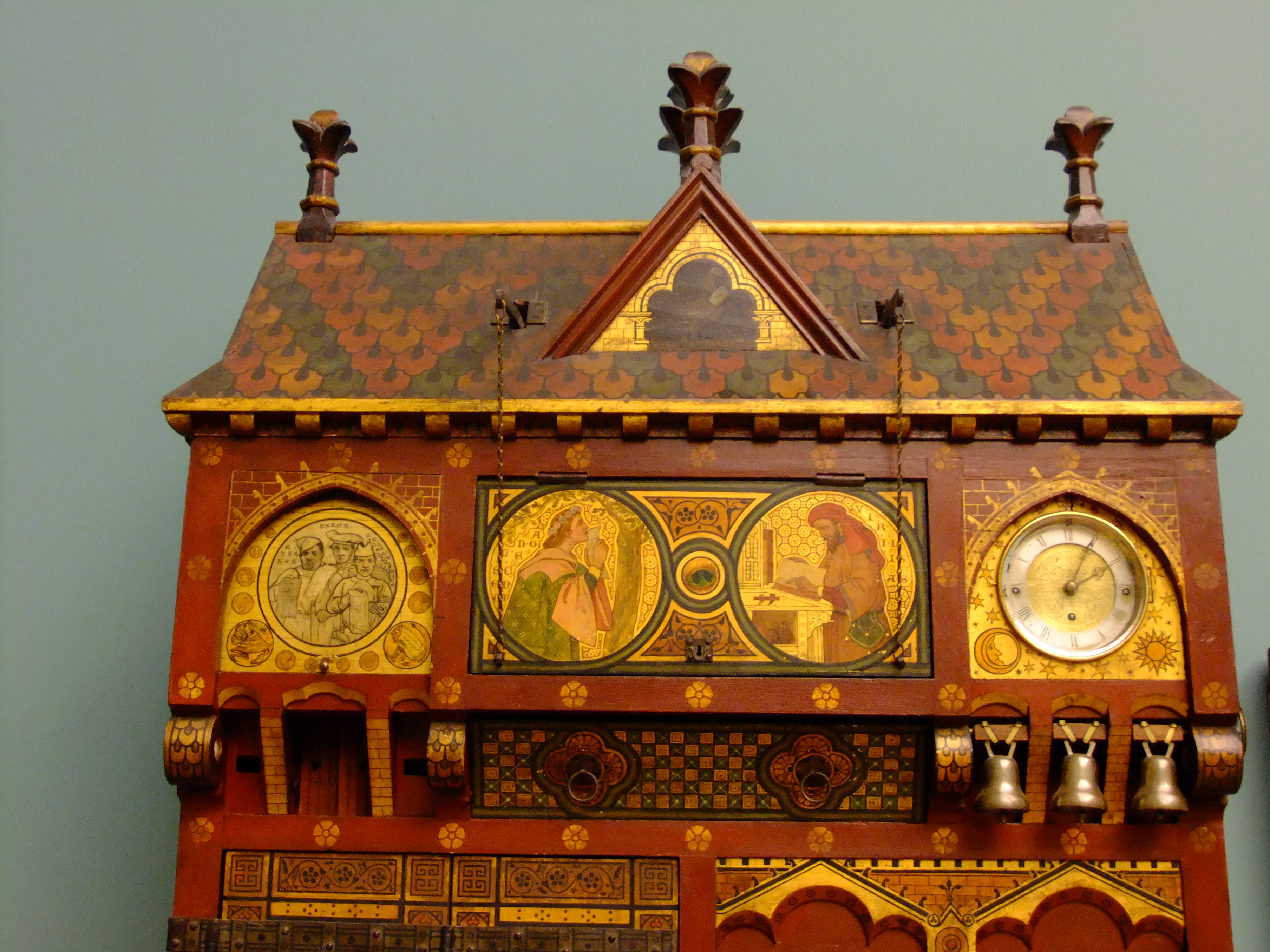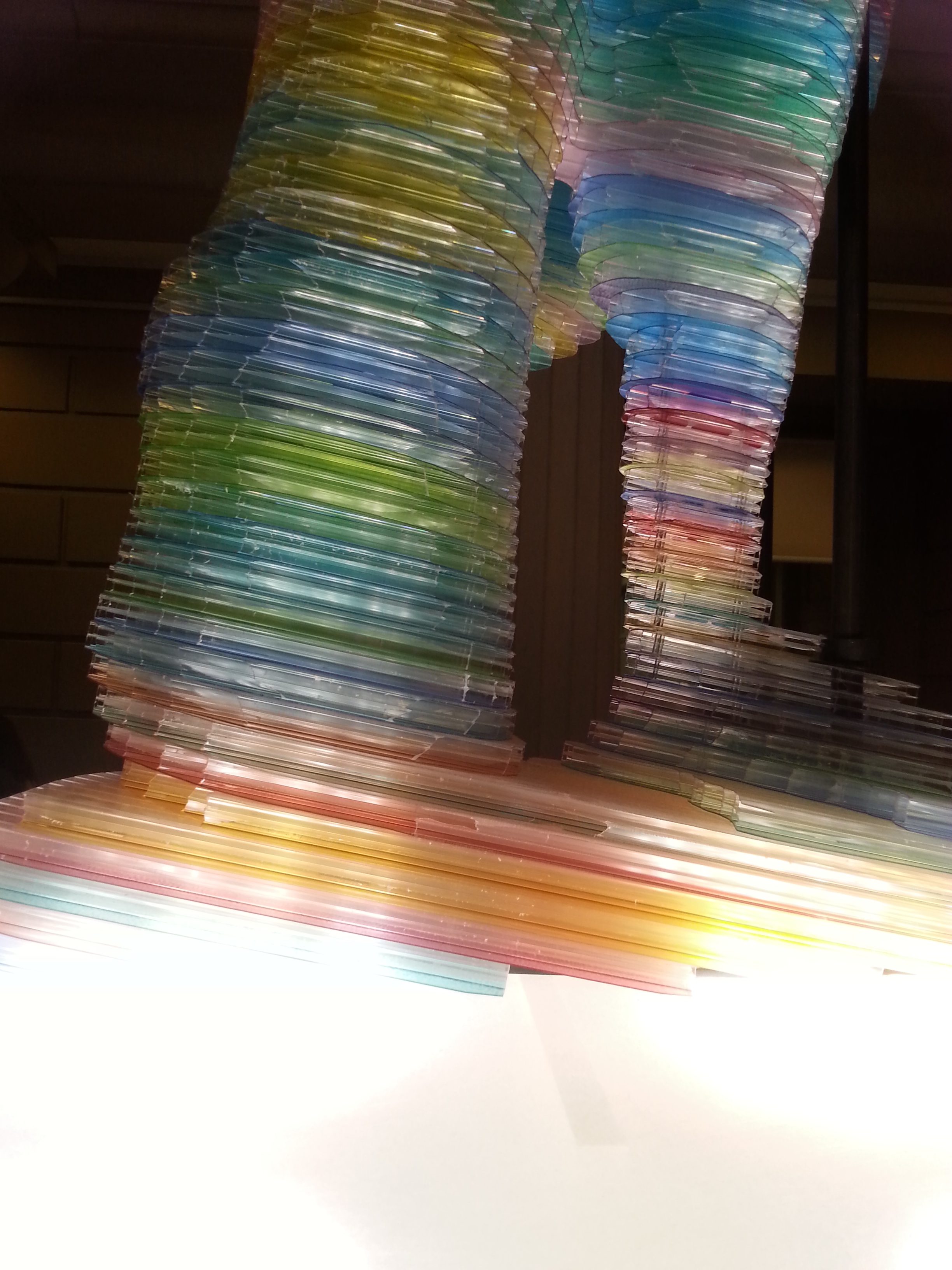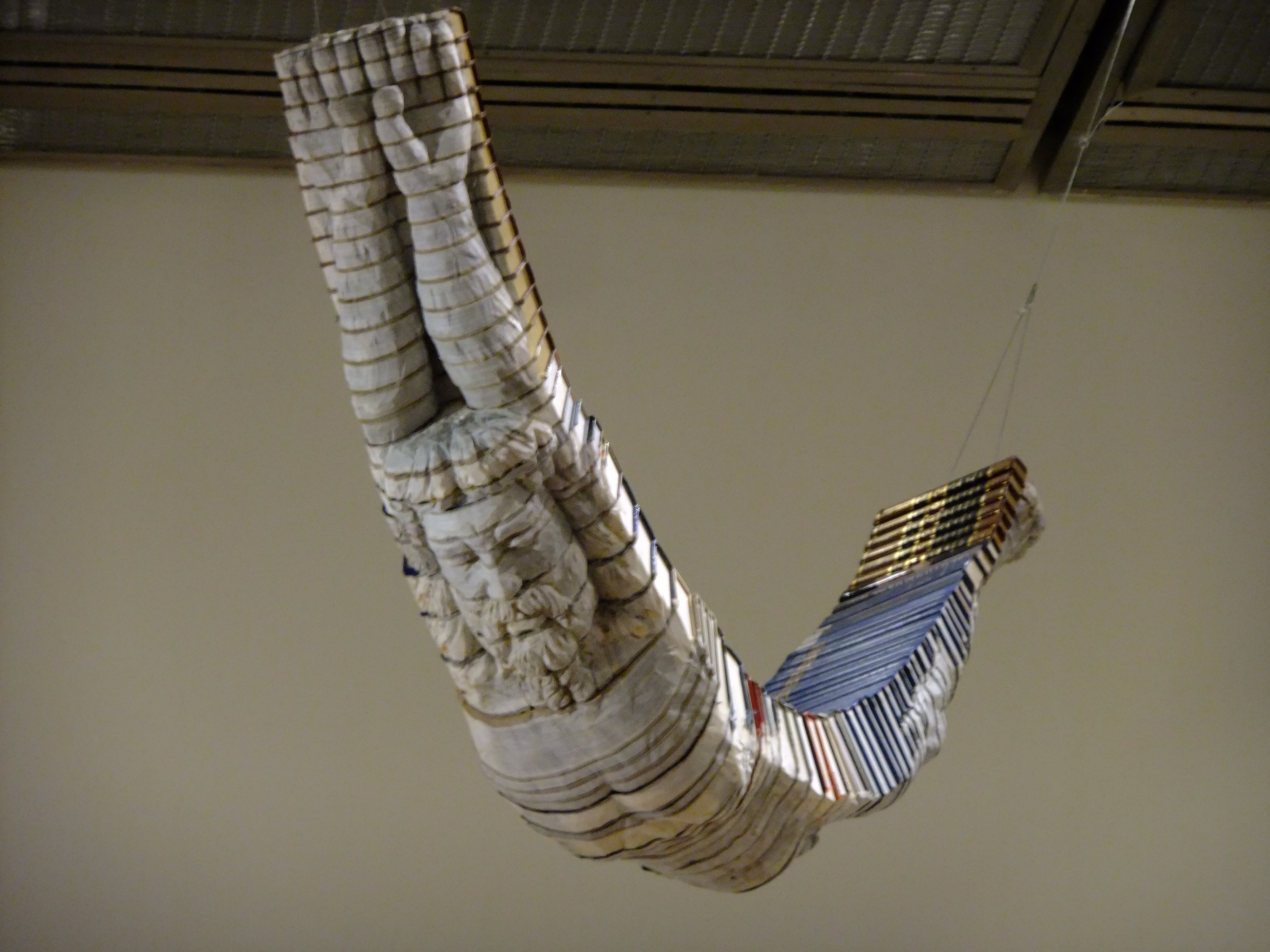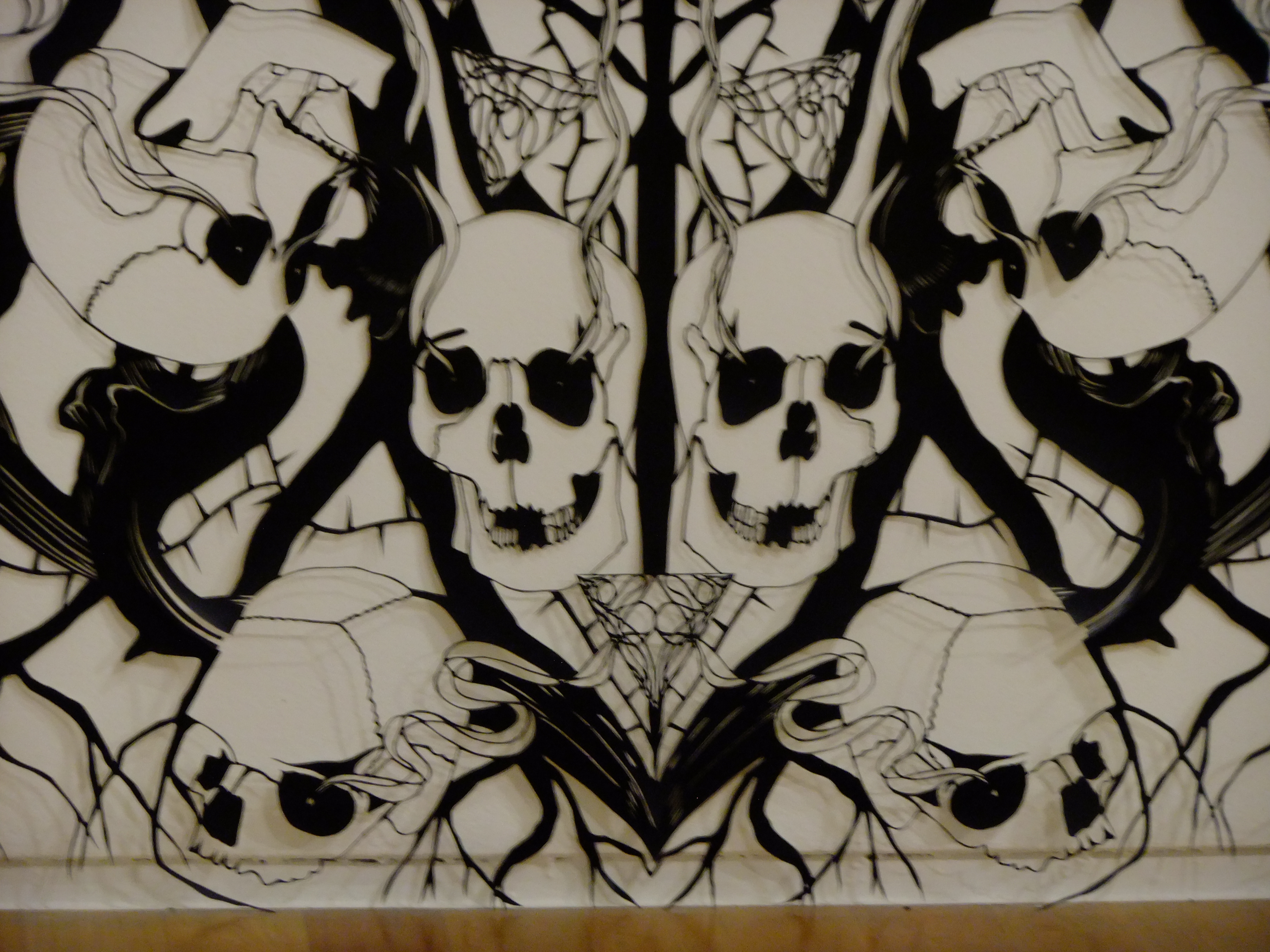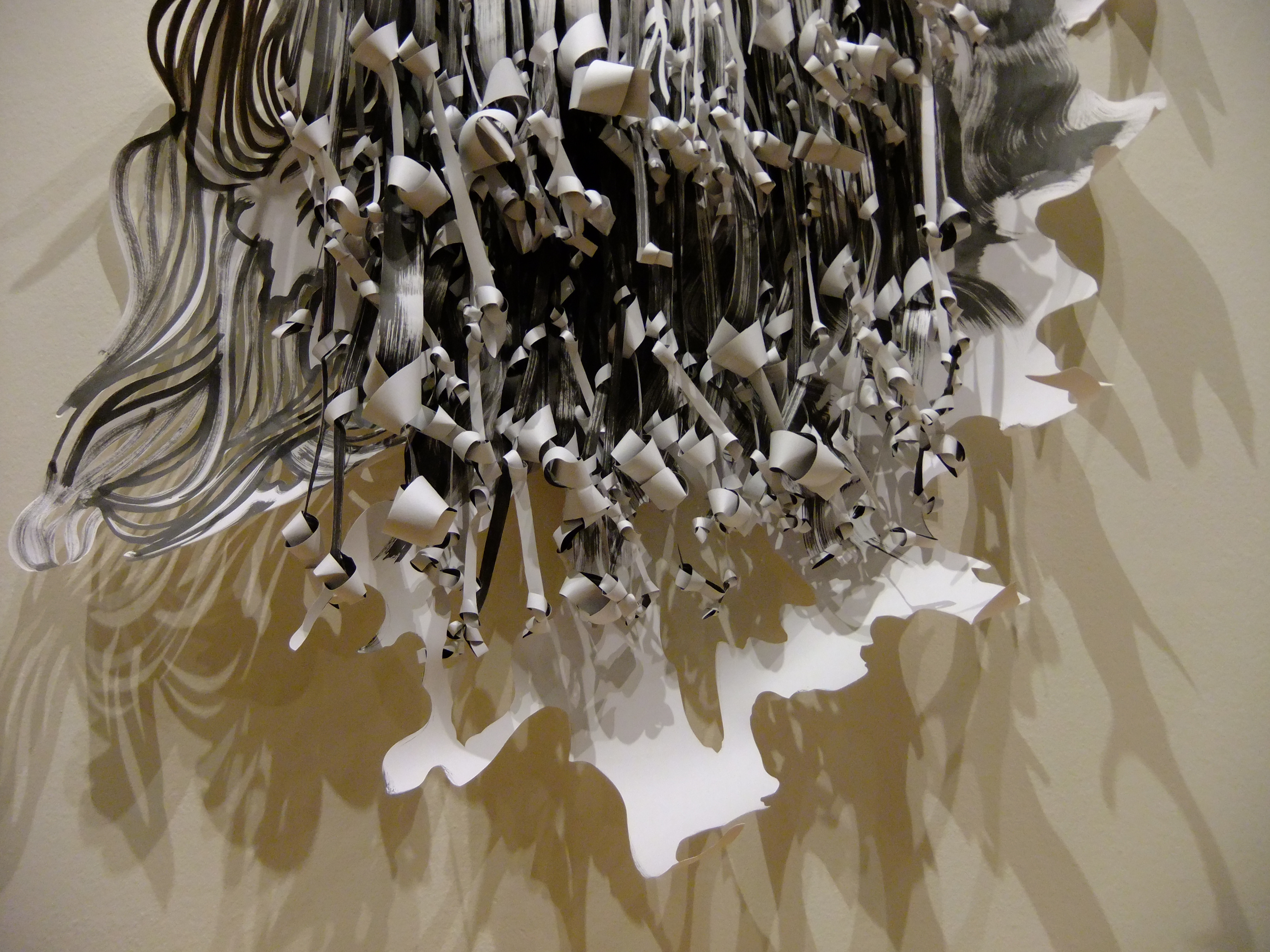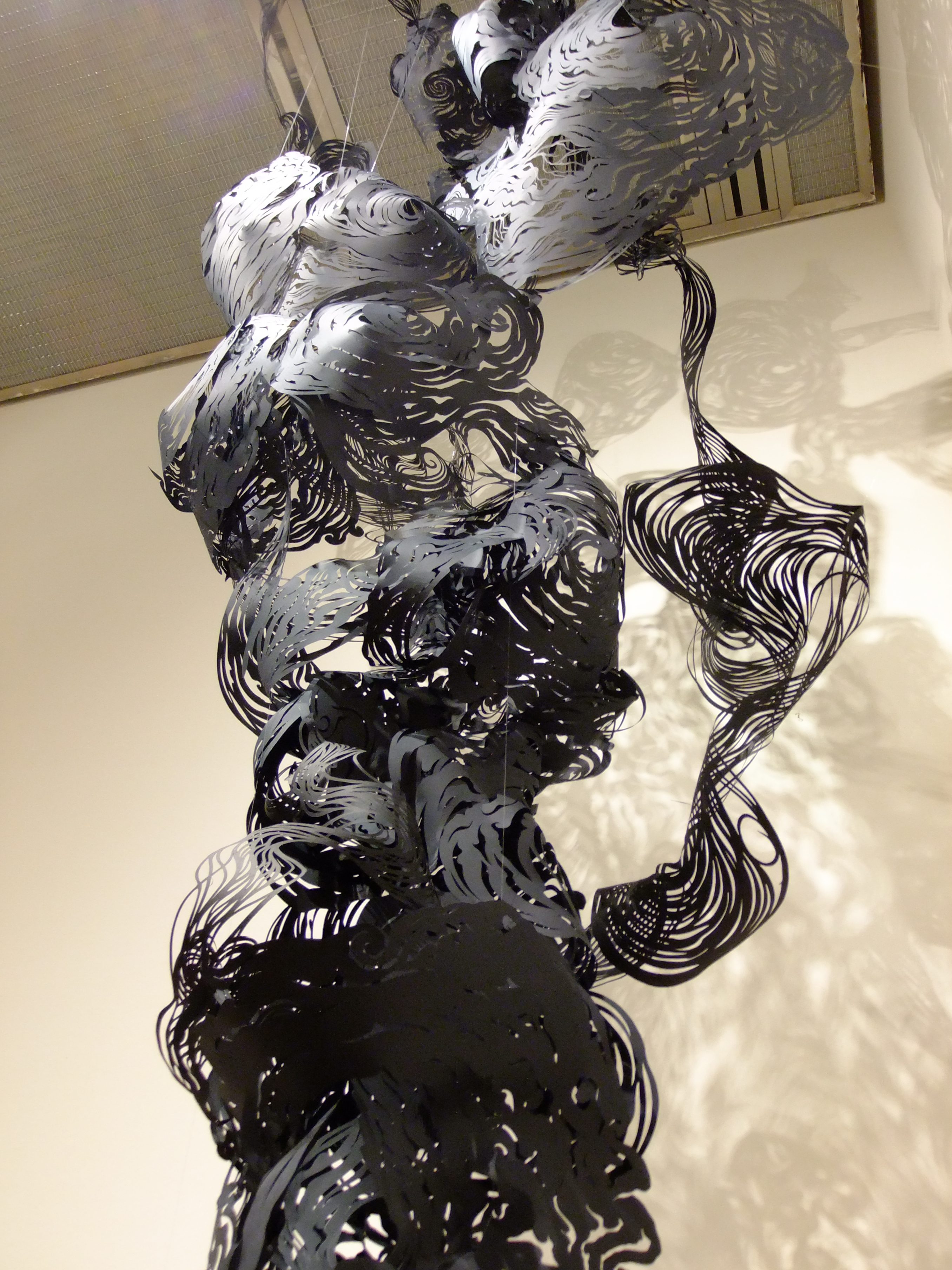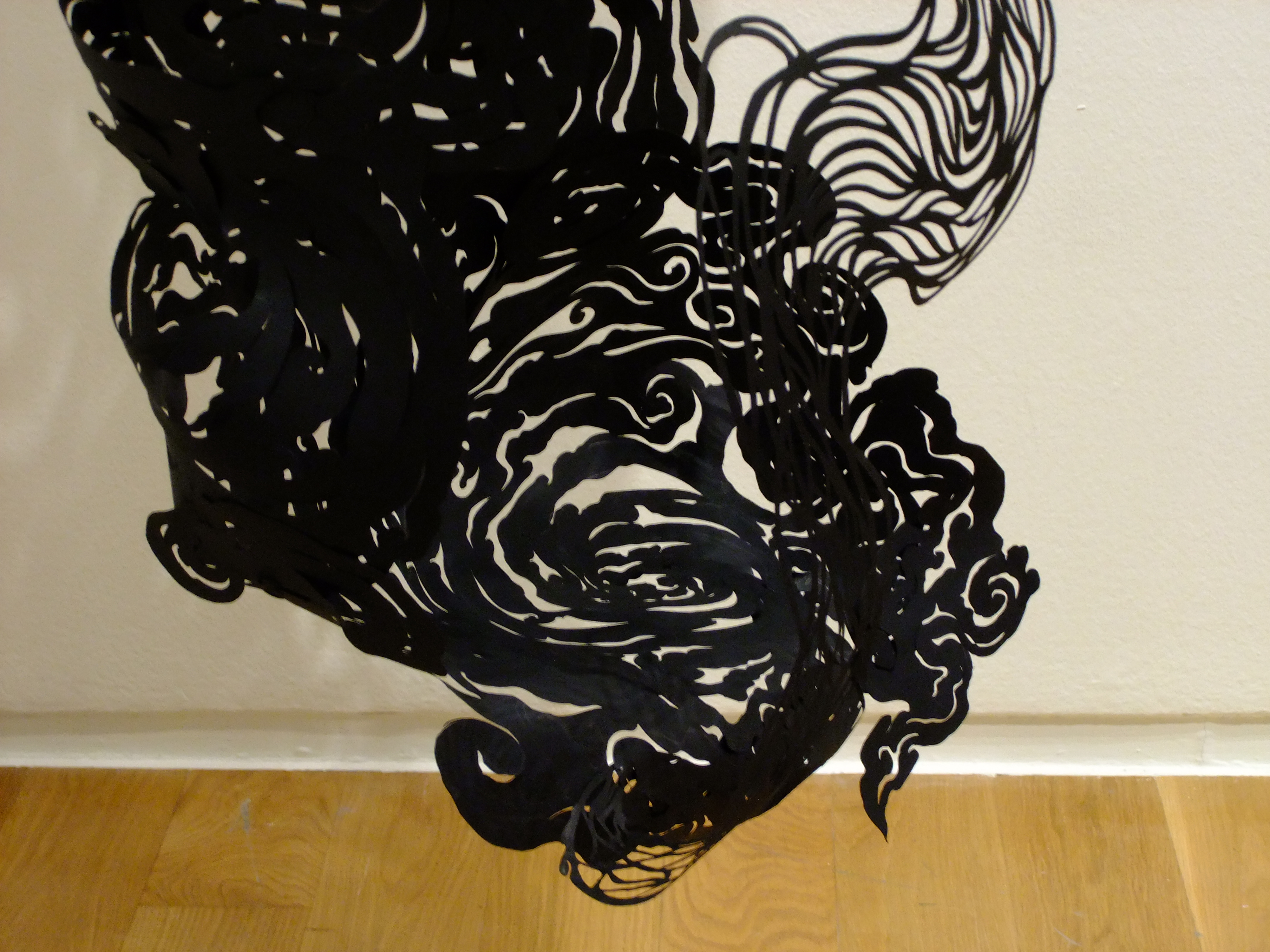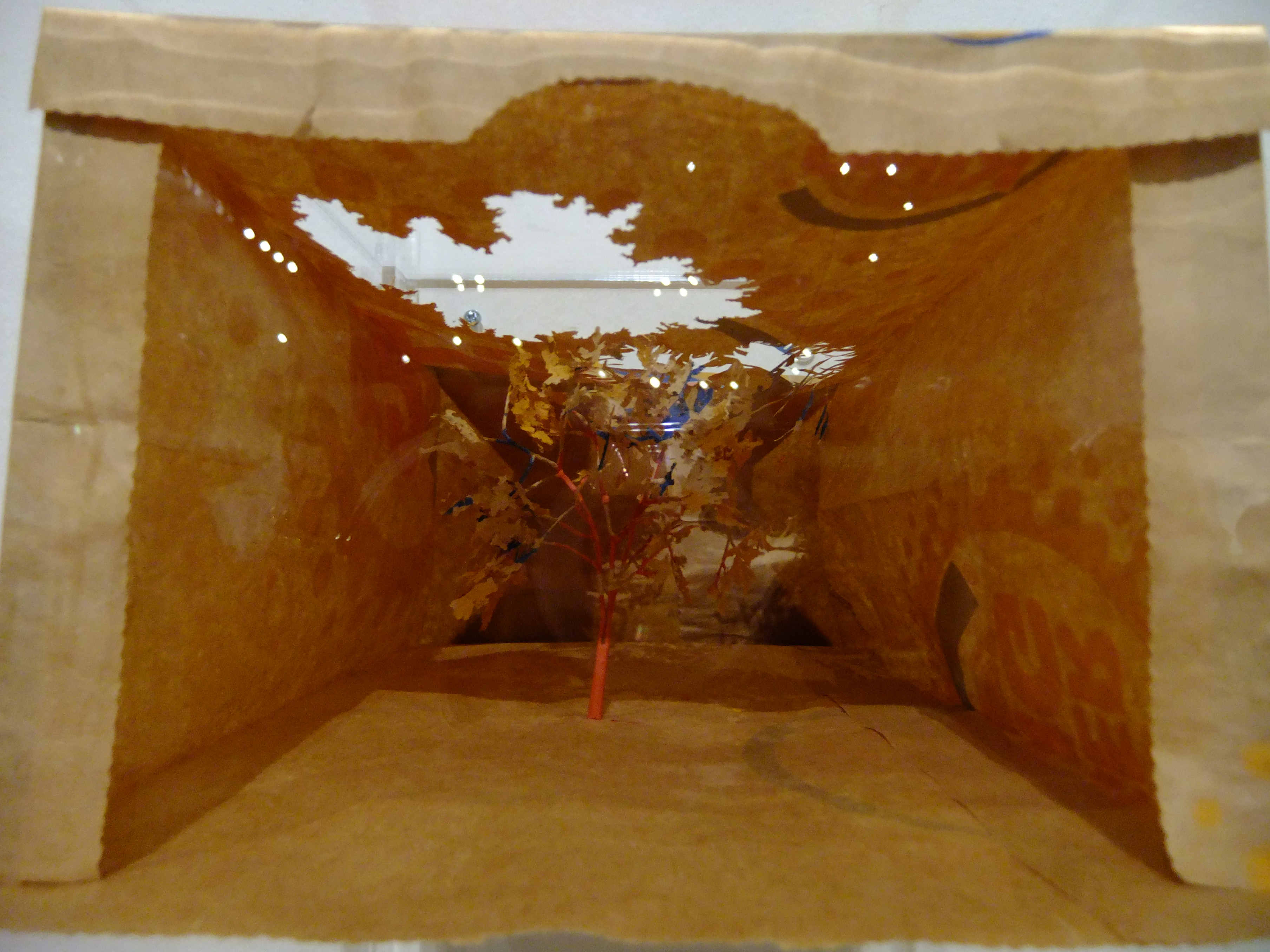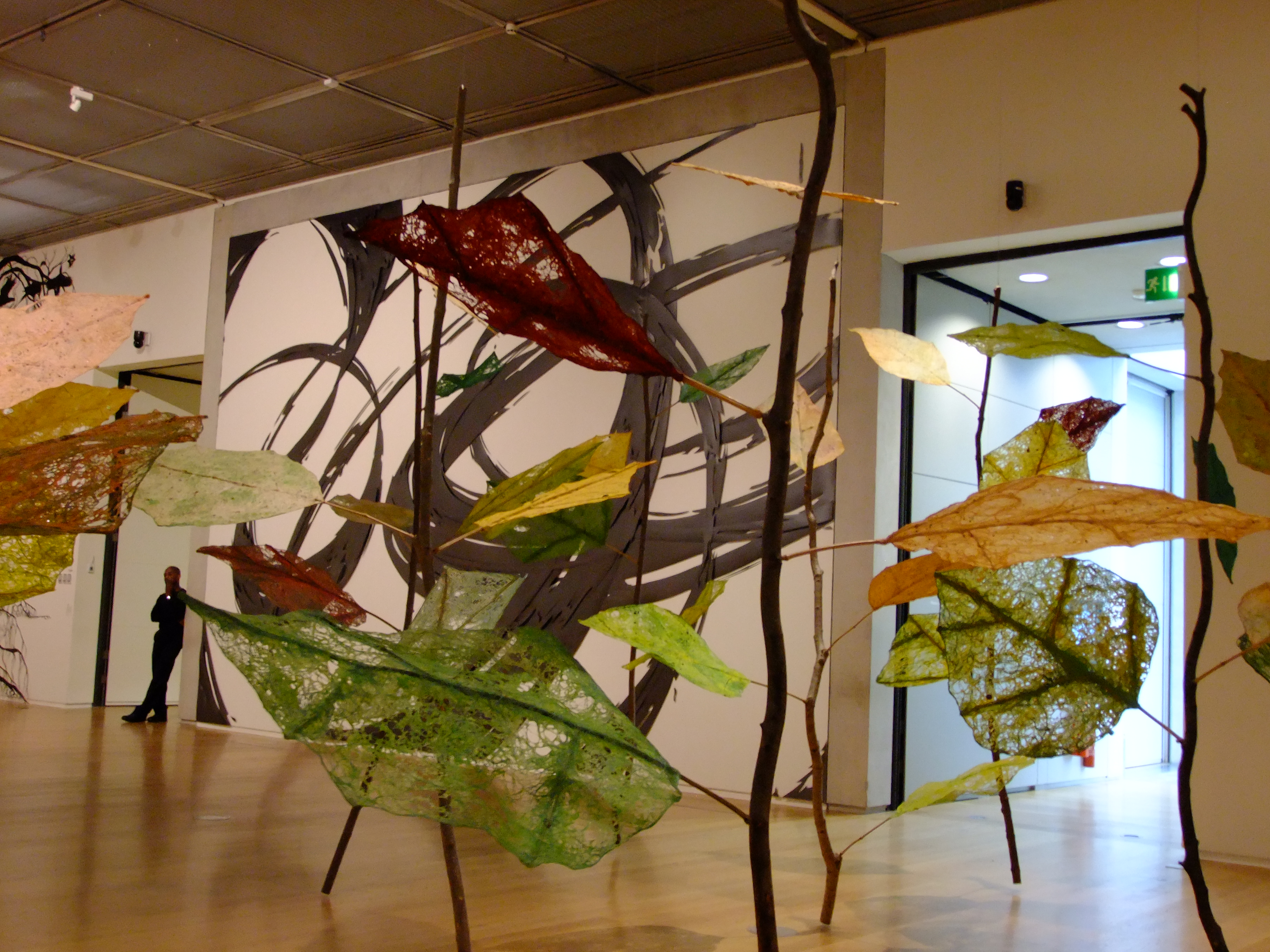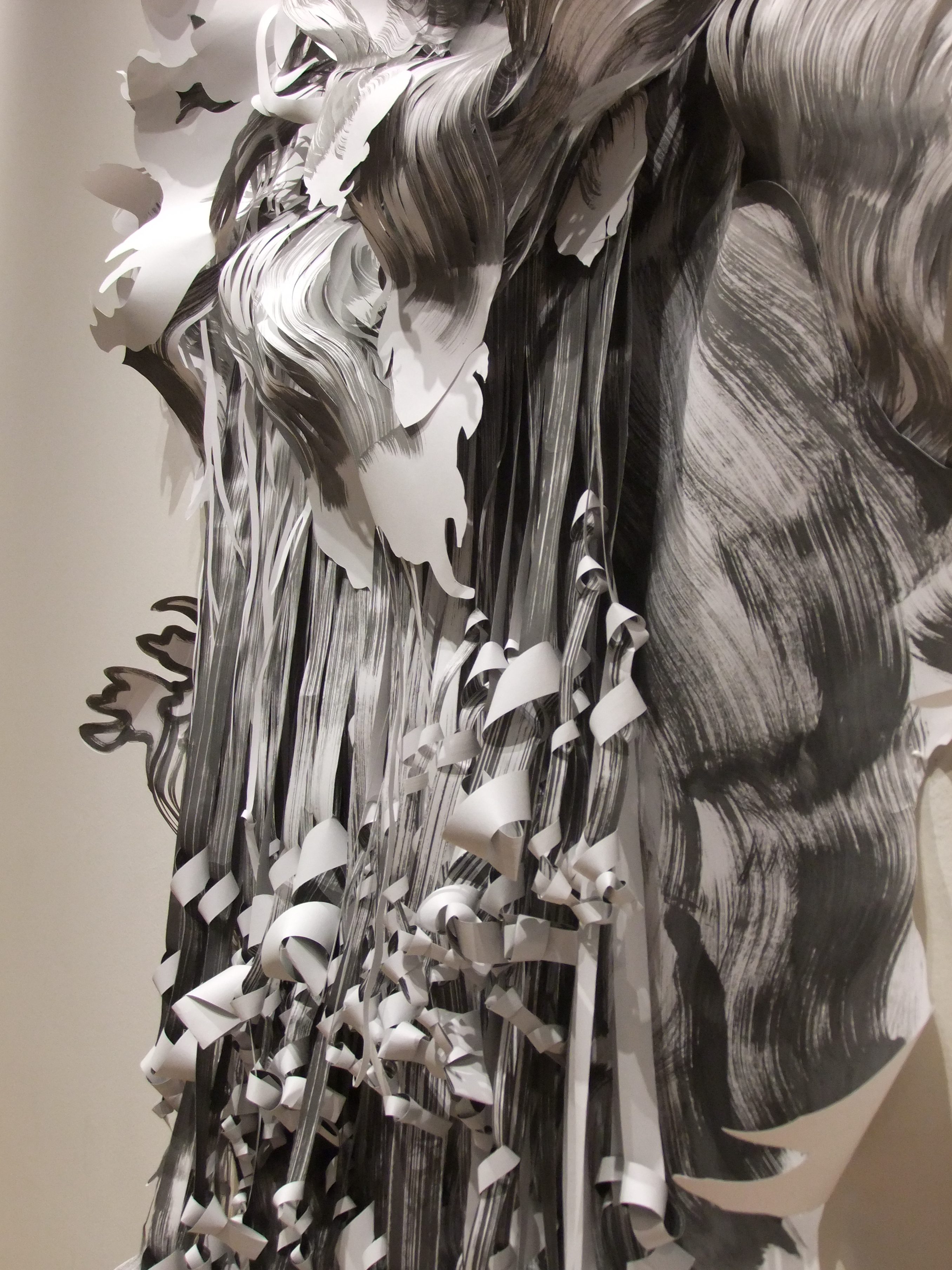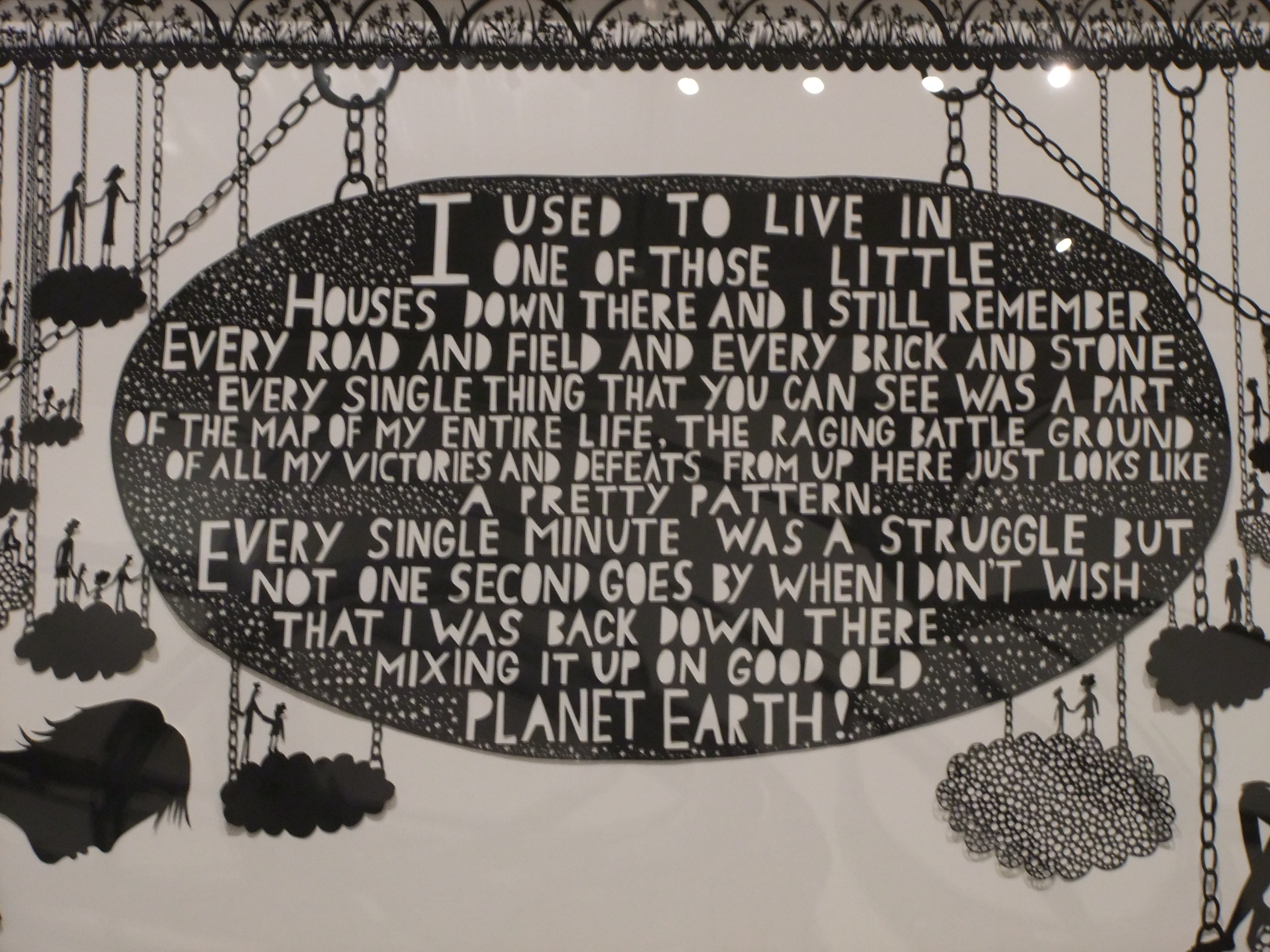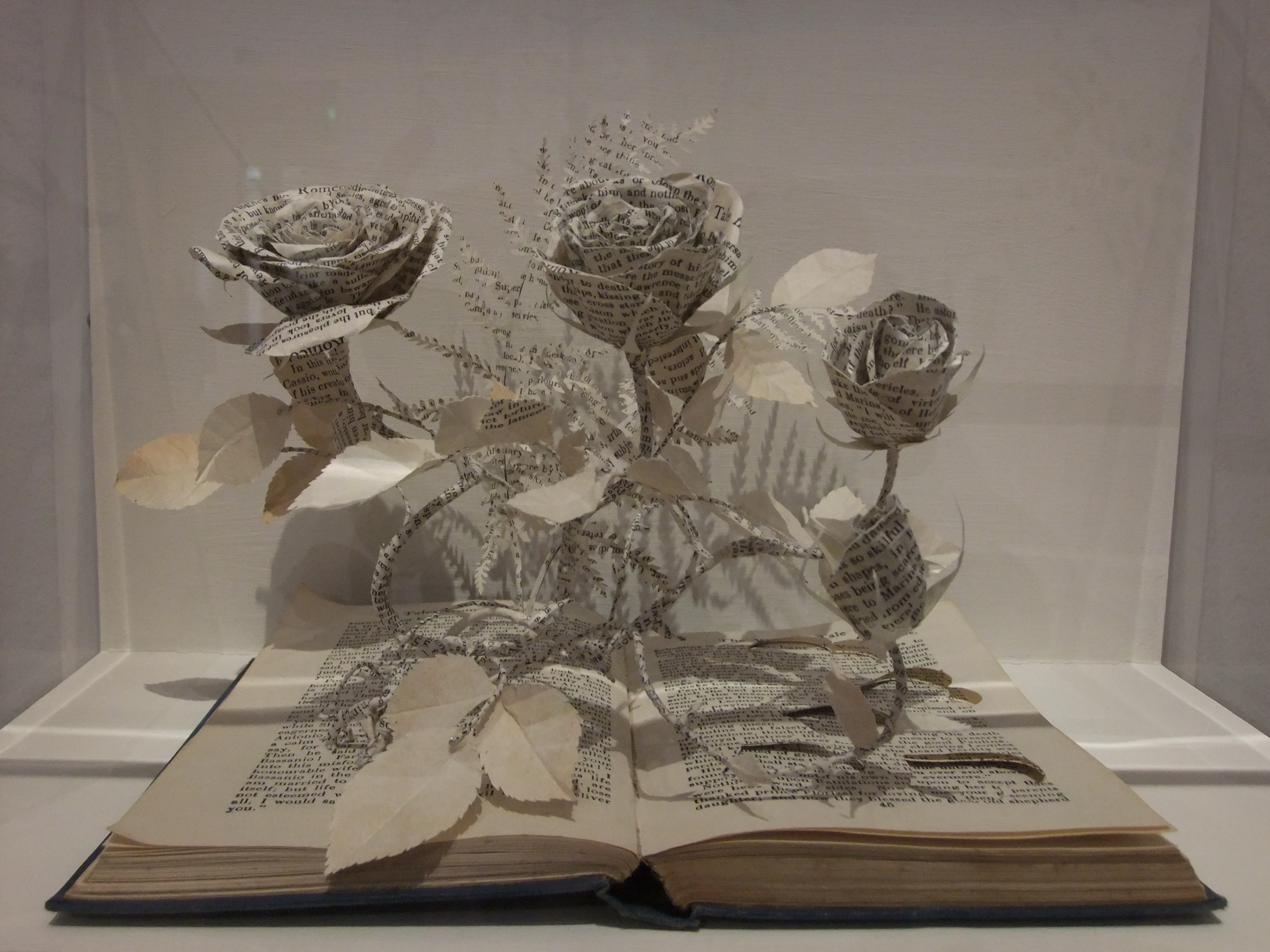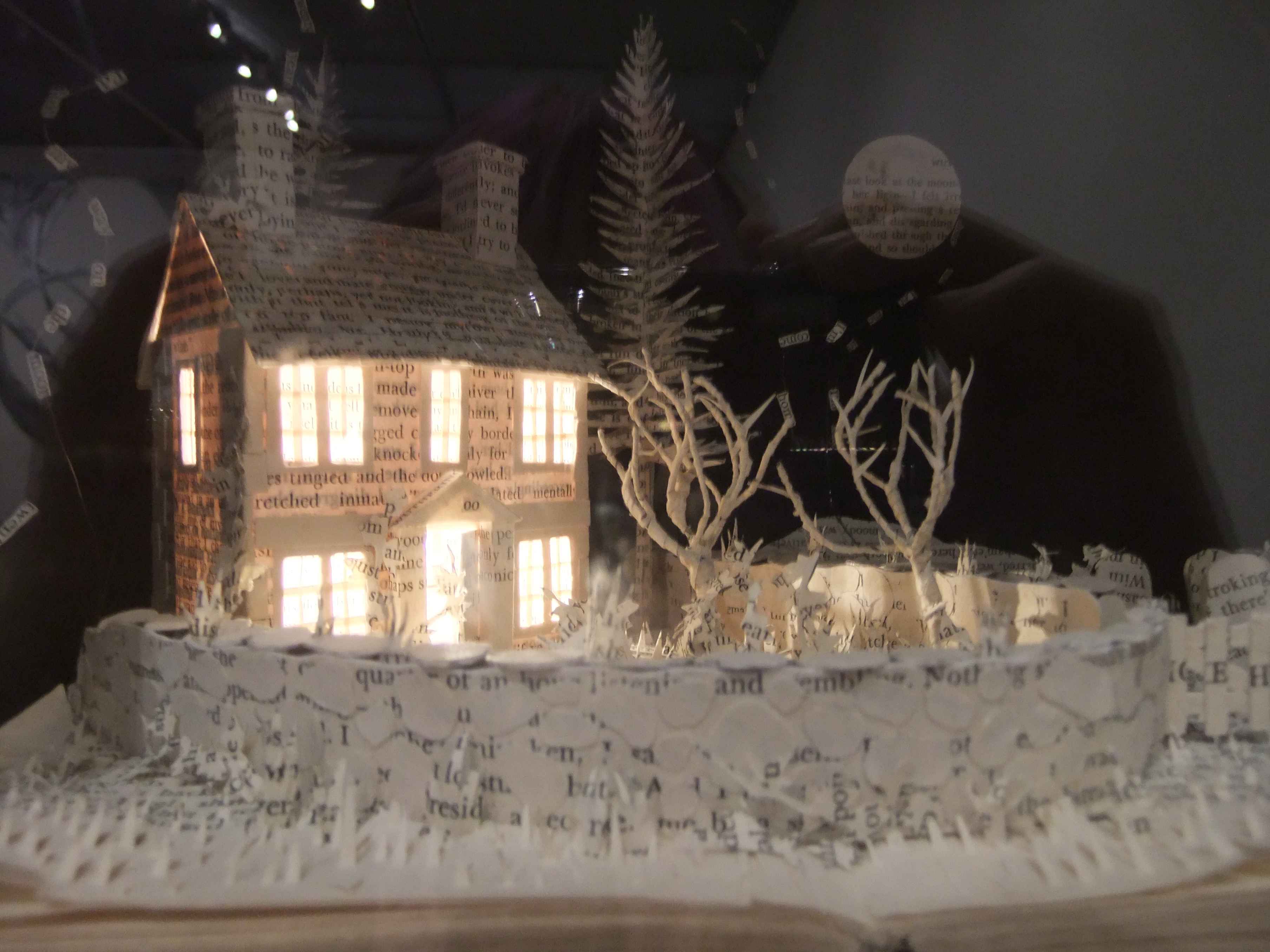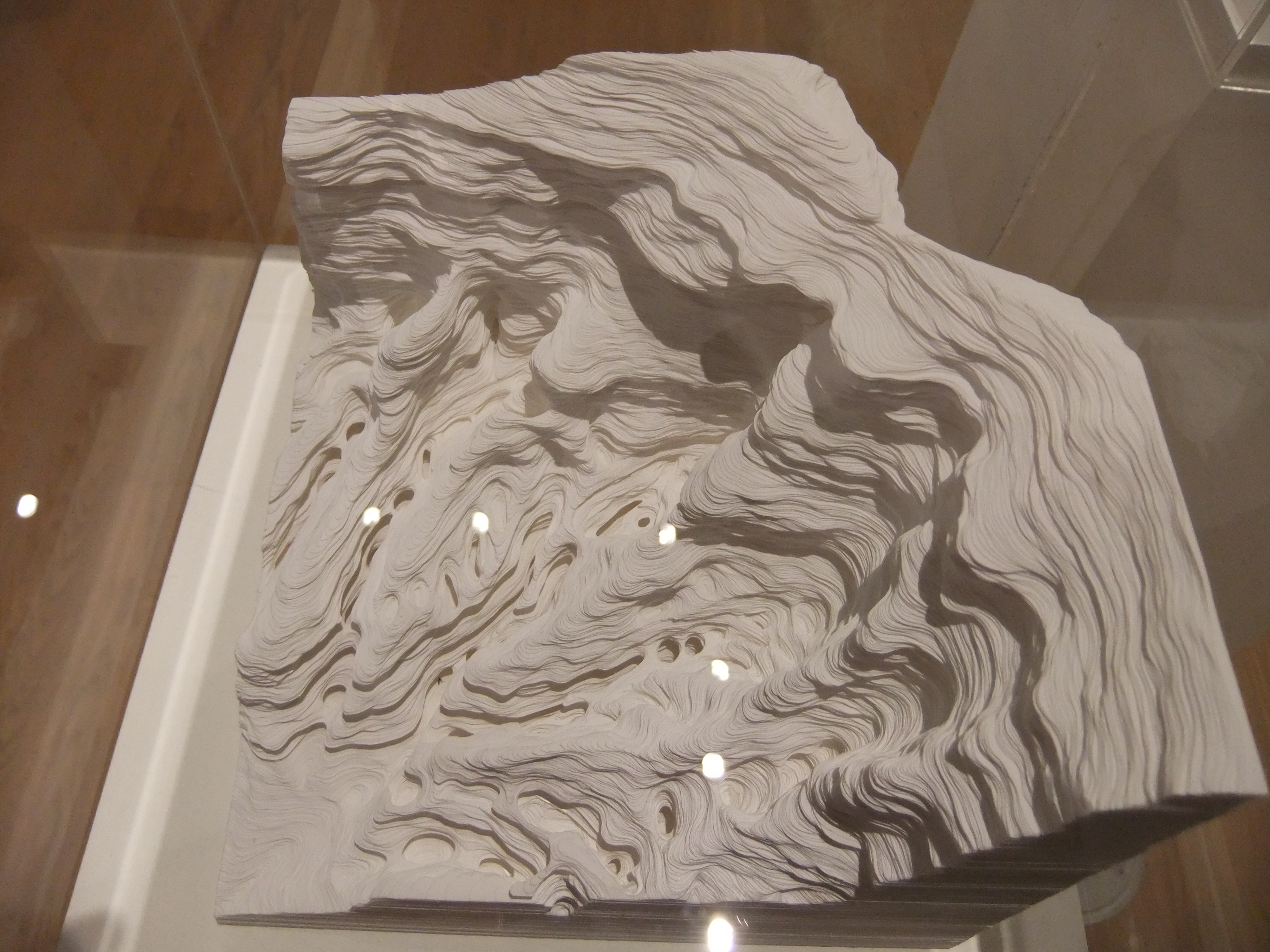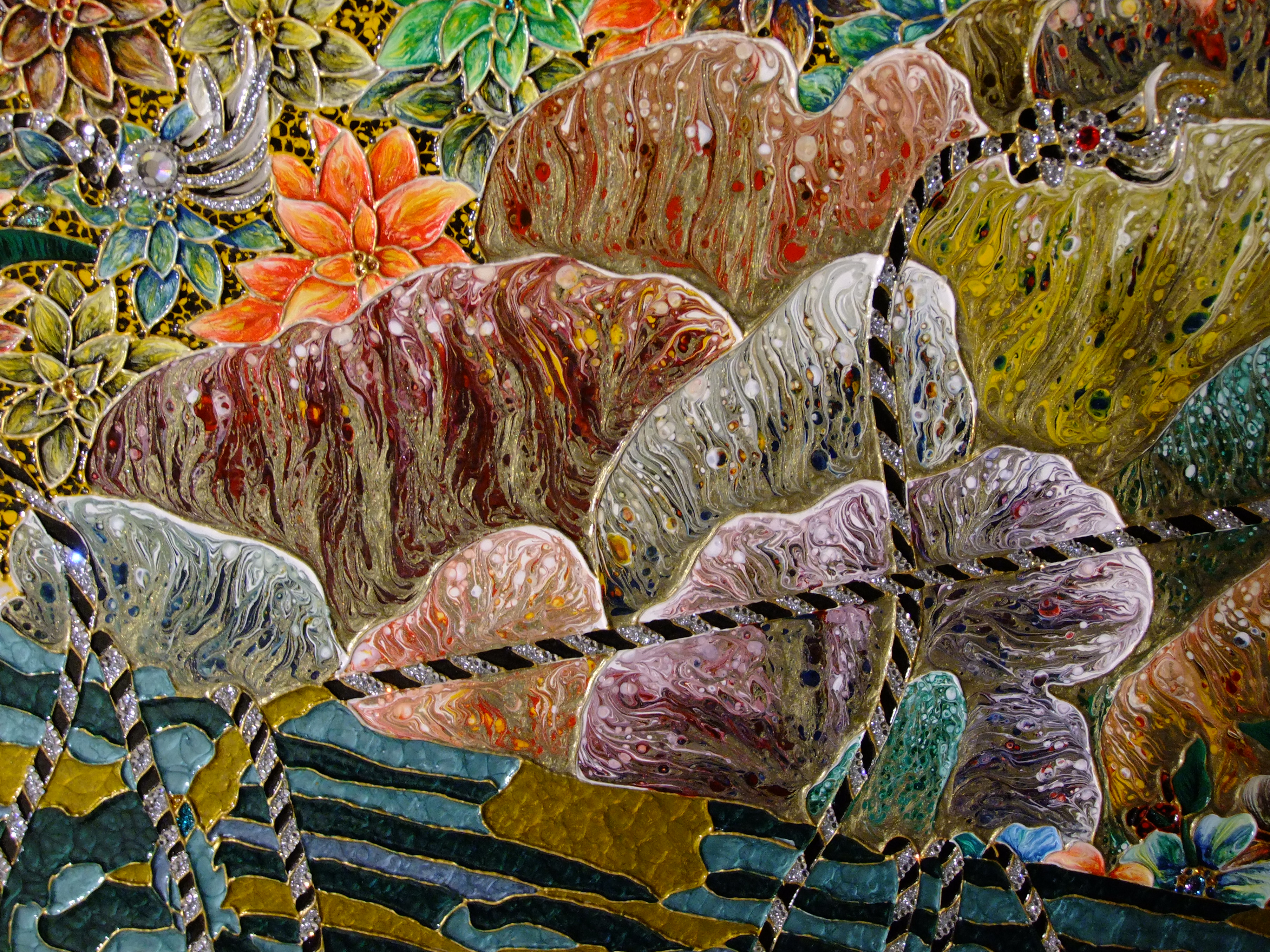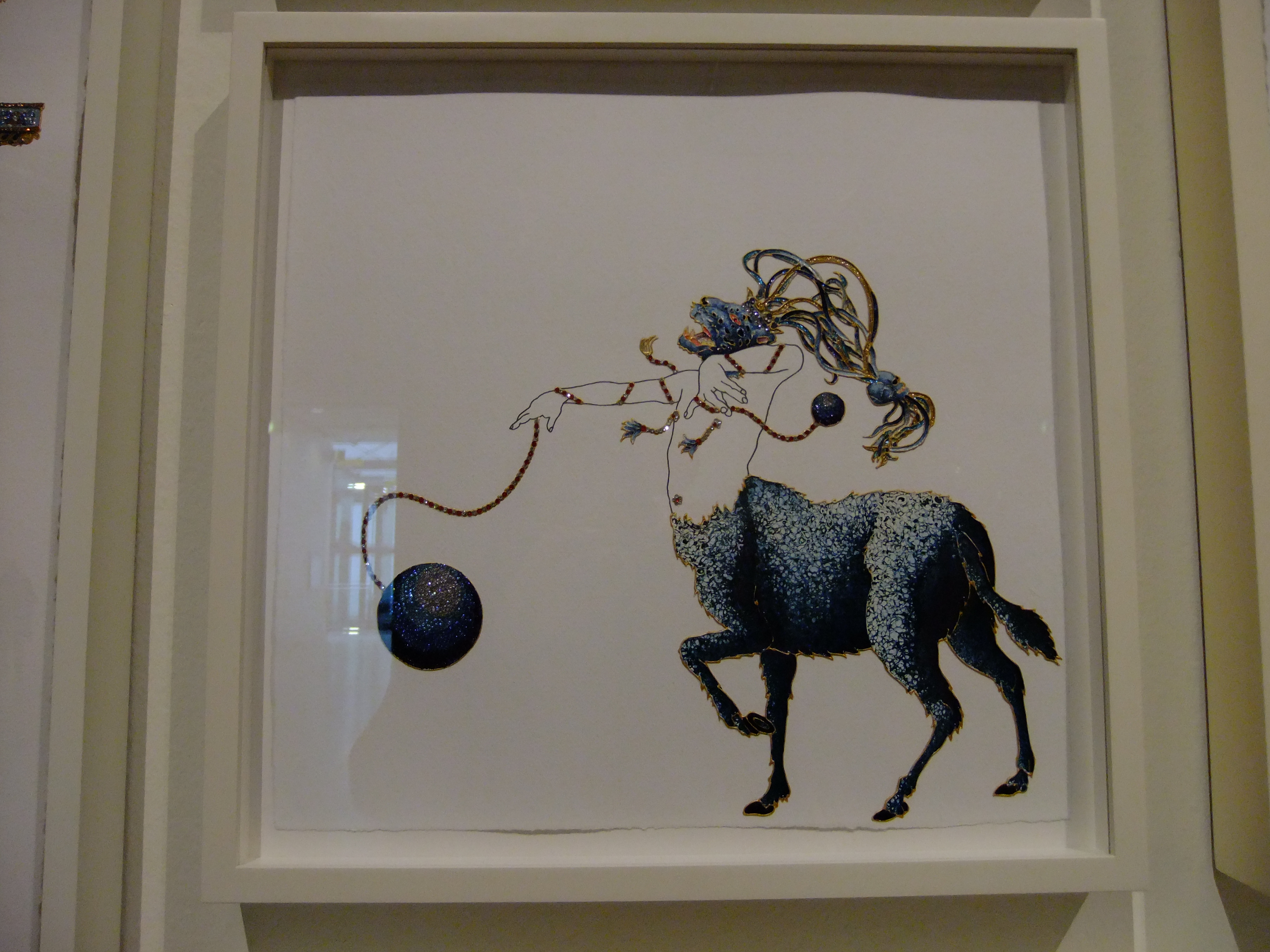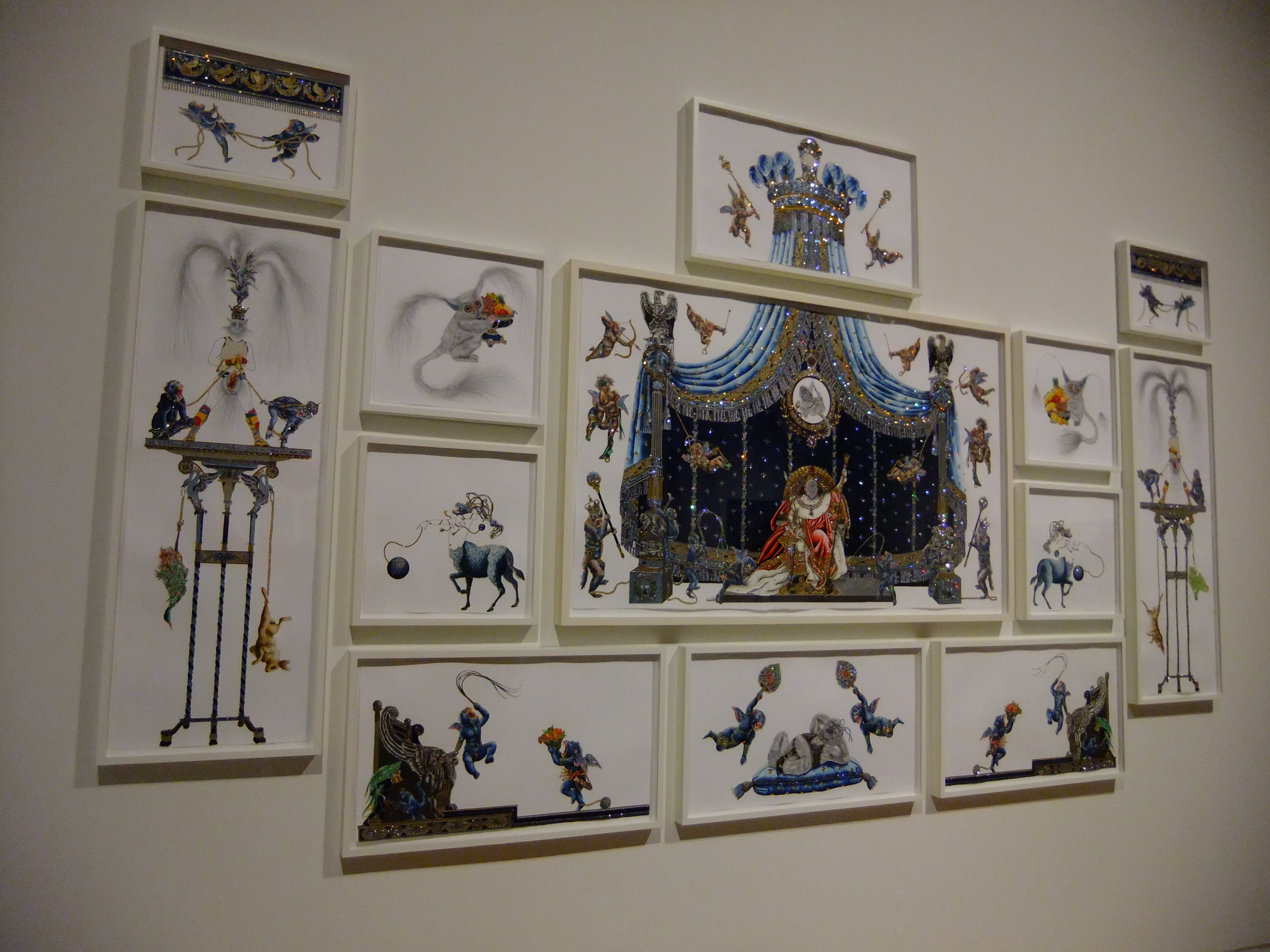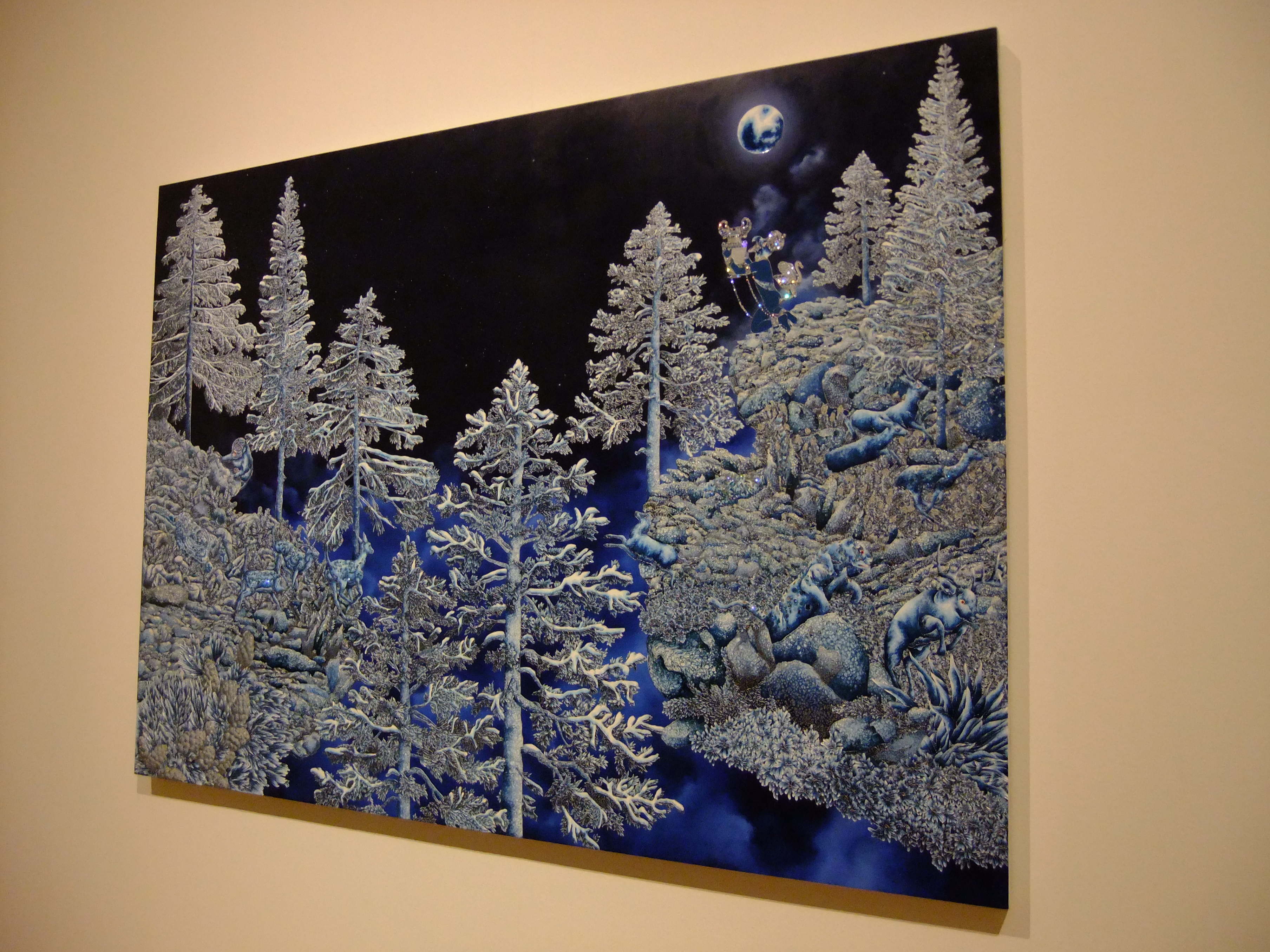Situated in the heart of Manchester, Manchester Art Gallery comprises 3 buildings: Main building was built as Royal Manchester Institution, a learned society, in 1823. Designed by Charles Barry in the Greek Ionic style. The Athenaeum, built in 1837 was also designed by Barry, in Italian Pallazo style. A third, newer building was constructed in 2002. Buildings are joined by a glass atrium space which is also used for exhibitions.
A city that benefited significantly from the Industrial Revolution, Manchester produced many very wealthy merchants and industrialists who contributed generously to philanthropic and charitable causes (John Rylands, Humphrey Booth, Robert Owens, Joseph Whitworth, Thomas Horsfall) as well as donating artworks to the city’s galleries and museums. Gallery has over 25,000 items in its collections. Its Victorian origins evident in fine collection of pre-Raphaelite art, Victorian glass, silver, furniture and other decorative wares. Some works by L S Lowry (although more in Salford as being where he was from).
The Gallery hosts regular exhibitions and uses the spaces creatively but sensitively to display larger installations. For example, Joana Vasconcelos’ exhibition of large mixed media/textile pieces were located throughout the gallery, amidst the permanent artworks. The connecting atrium was also used to display a particularly large, suspended piece. This made the space vibrant, exciting and drew attention to both the more traditional artworks as well as catching the eye as contemporary artworks in their own right. This was a great way to bring old and new together and to celebrate old masters alongside contemporary modern artists working in different media.
- Joana Vasconcelos
- Joana Vasconcelos
- Joana Vasconcelos
- Joana Vasconcelos
- Joana Vasconcelos
- Joana Vasconcelos
- Joana Vasconcelos
Manchester Art Gallery is mainly an older building but benefits from considerable natural light giving the galleries an open, light and airy feel. Walls are painted in soft neutrals so as not to distract from the artworks. Nothing fusty or musty! Galleries are mainly organised by era/style. Paintings are sited alongside floor/wall tiles, potteryware and furniture.
Use of technology
Manchester Art Gallery makes extensive use of technology. Its collections can be viewed on its own website but also on broad-reaching sites such as Art UK.
Audio guides are a great way to gain a deeper understanding of works in the various collections. An extensive tour programme also gives the opportunity to learn about the collections from an experienced guide. Having the chance to ask questions and also to appreciate the nuances/history of pieces is excellent.
Accessibility
To make the gallery accessible to all ages there is an extensive programme of educational events. From school groups, archive visits, arts-based activities for all ages, holiday and summer projects, volunteering opportunities. The gallery spaces are also available to hire for events.
Relevance of galleries
Despite technological advancements, nothing can beat seeing an artwork in real life. The size, scale, depth of colour, observation of brushstrokes, stitch, techniques etc. can only be appreciated when seeing the artwork in person. The physical presence of a piece of art and its location/setting make a huge difference to interpreting/enjoying the work. Galleries are also being more sensitive to the wider needs of their audience and the opportunities they have to engage people directly with art. Talks, tours, practical making sessions, art clubs etc. all bring the gallery to life and encourage more interest and visitors.
Temporary exhibitions bring new artists to a wider audience and putting them in a prestigious setting is a great opportunity for emerging artists. Exhibitions also allow galleries to refresh their displays whilst simultaneously showcasing their extensive permanent collections. For regular visitors exhibitions give new impetus to visit a favourite gallery. Temporary exhibitions also allow galleries to push the envelope with the choice of subject, work, media, scale. Exhibitions can celebrate/commemorate events (world wars, abolition, suffrage etc.) or focus on a particular artist’s work (Raquib Shaw, Hetain Patel, Waqas Khan), a technique (Paper Cut).
